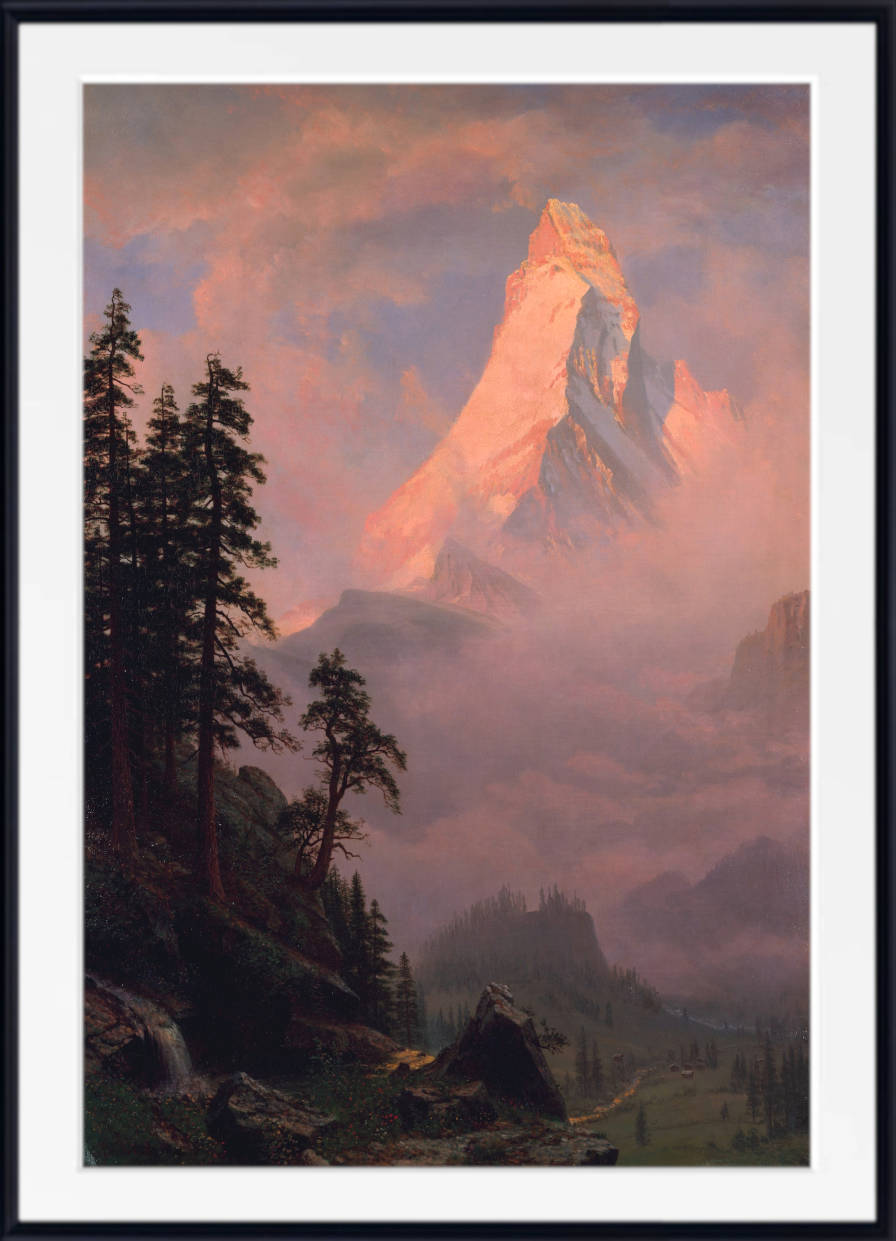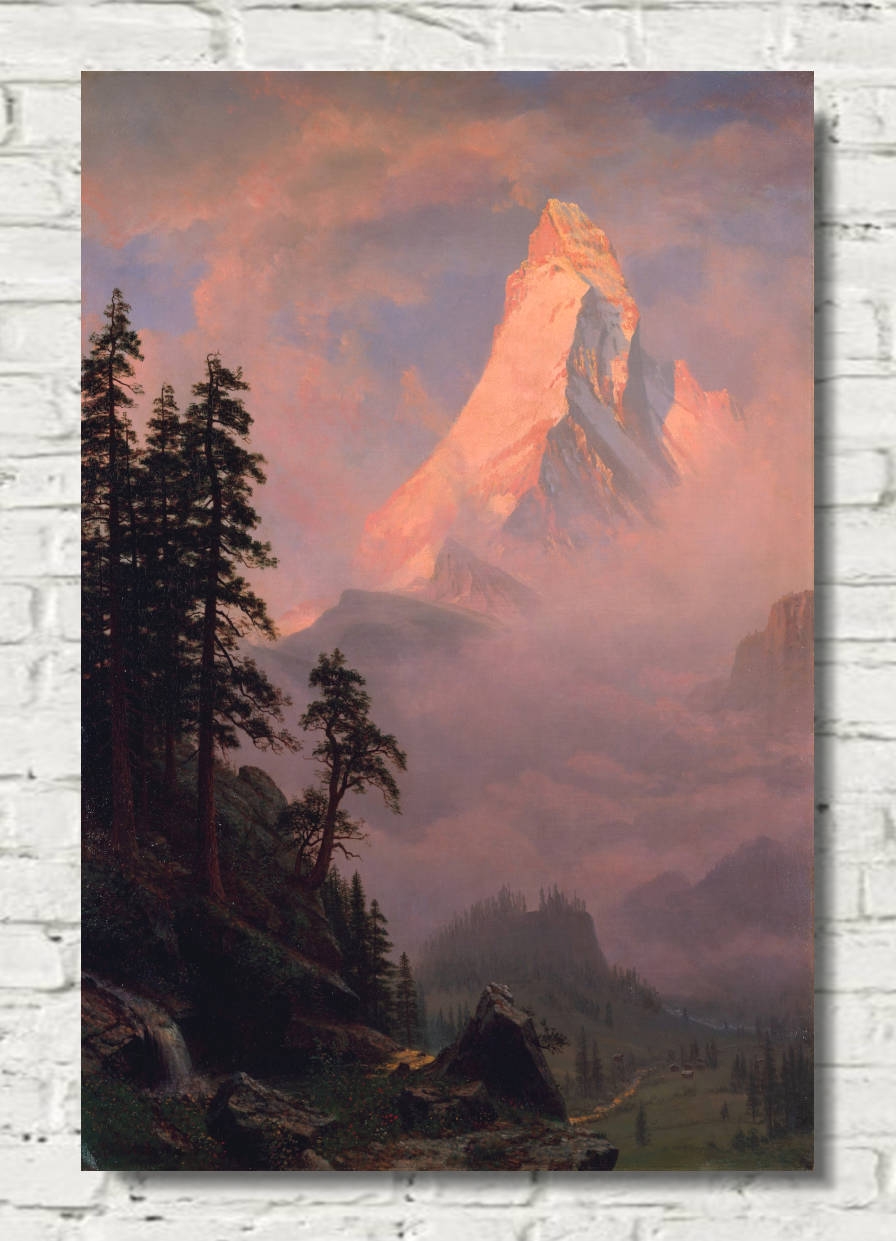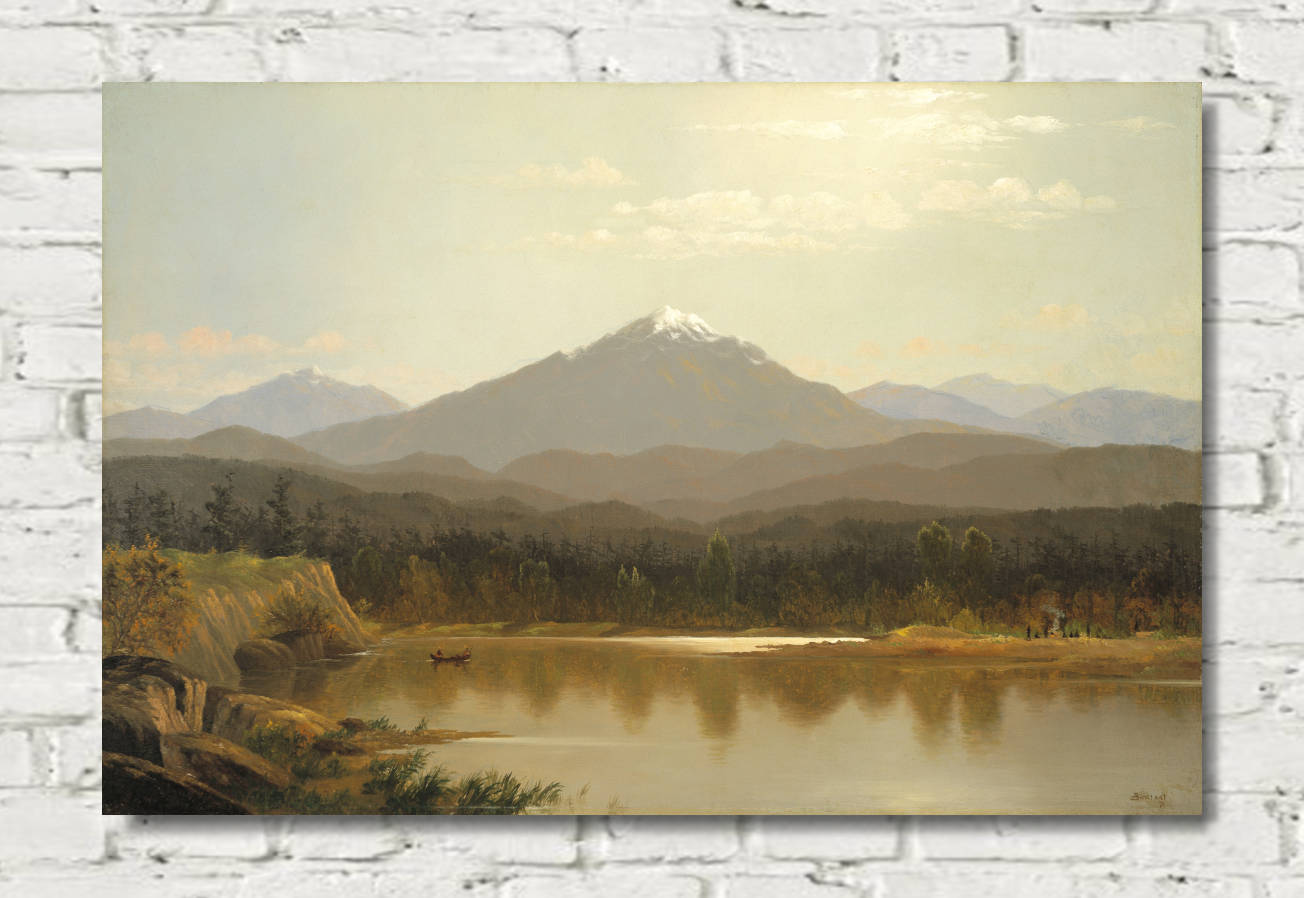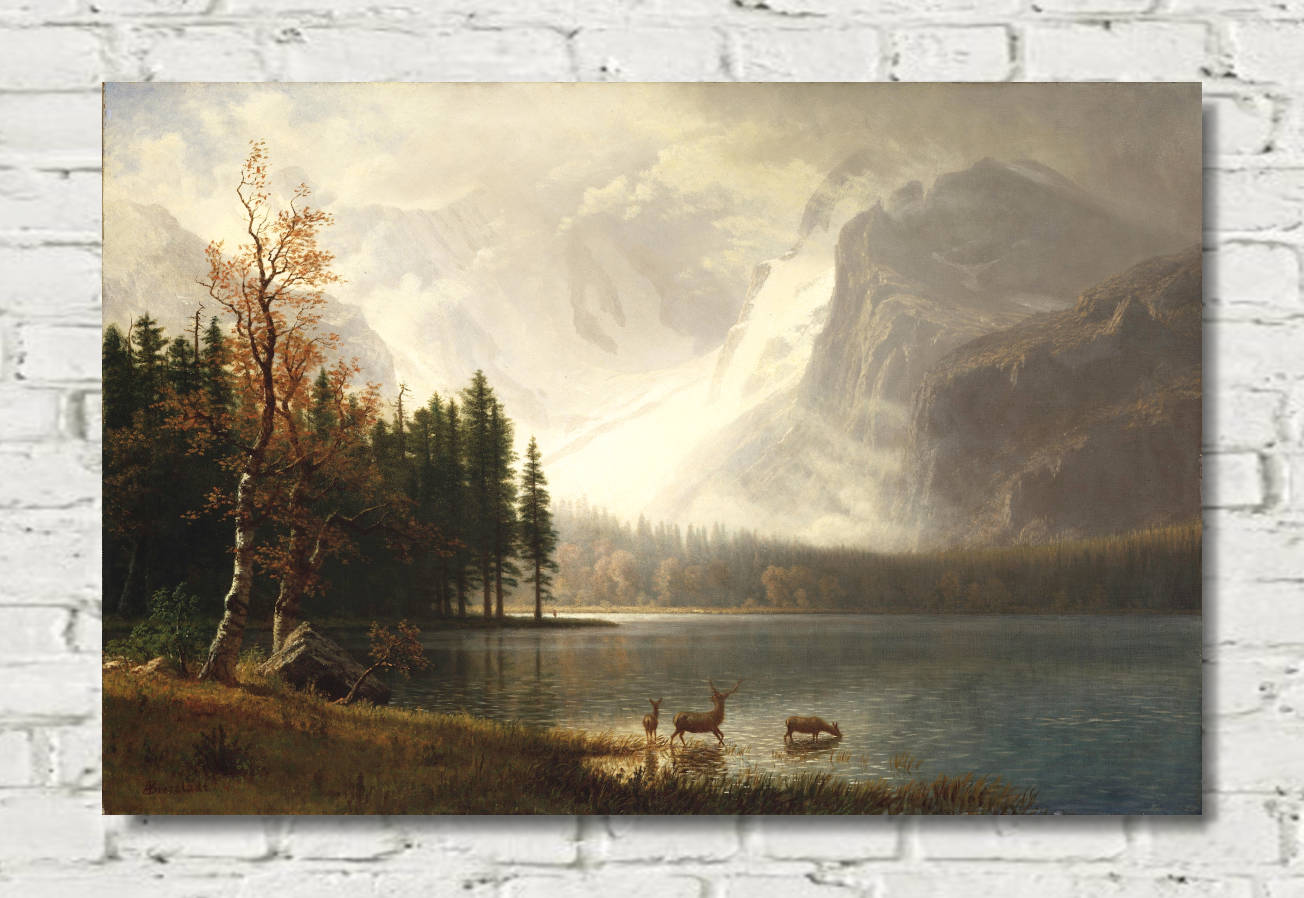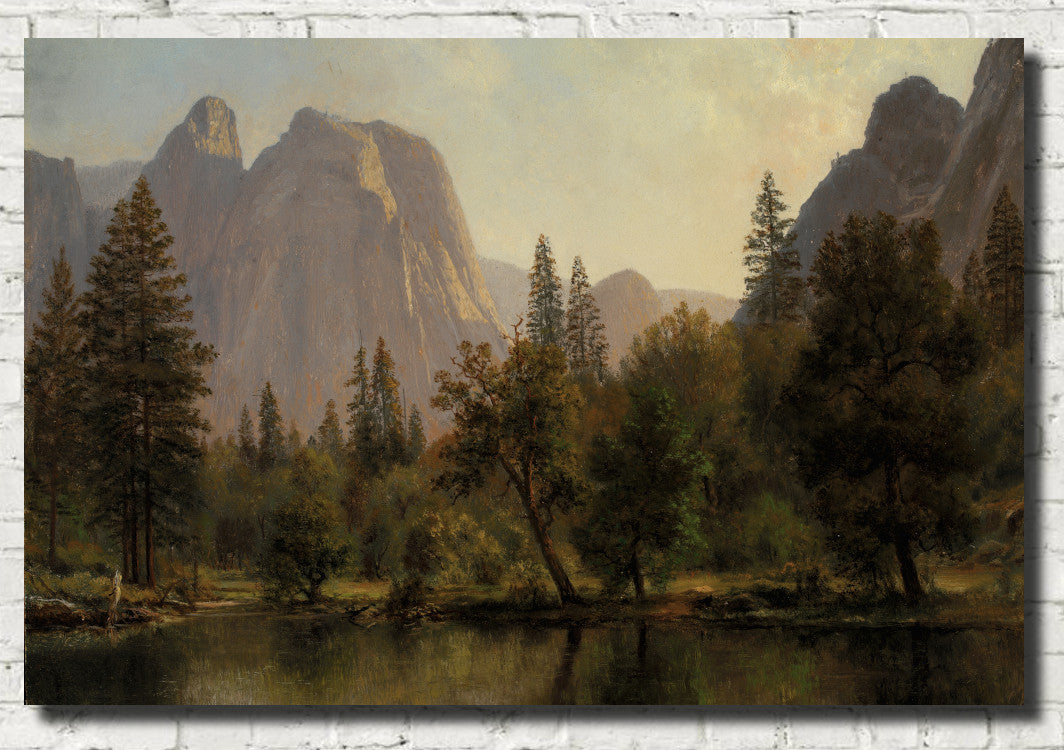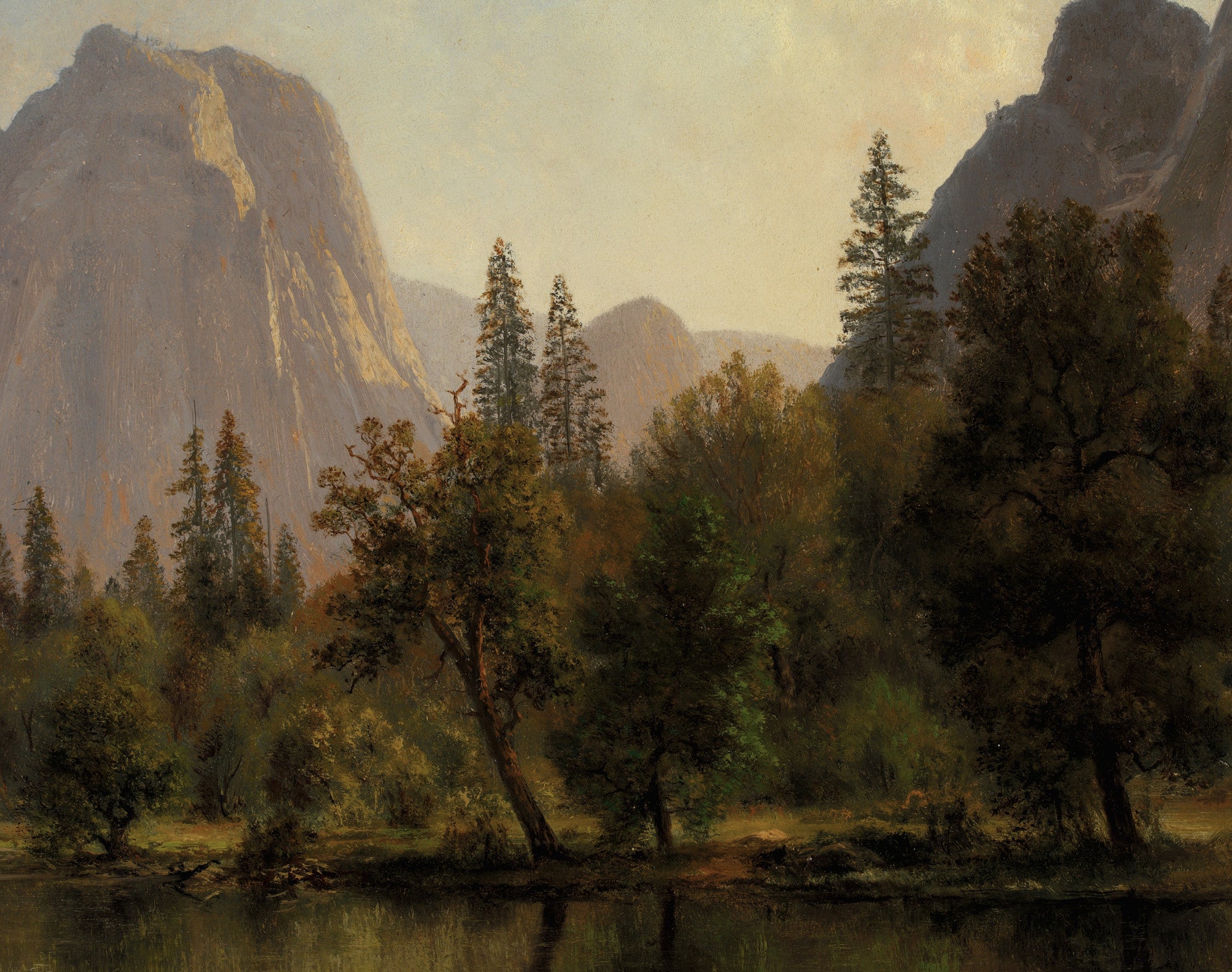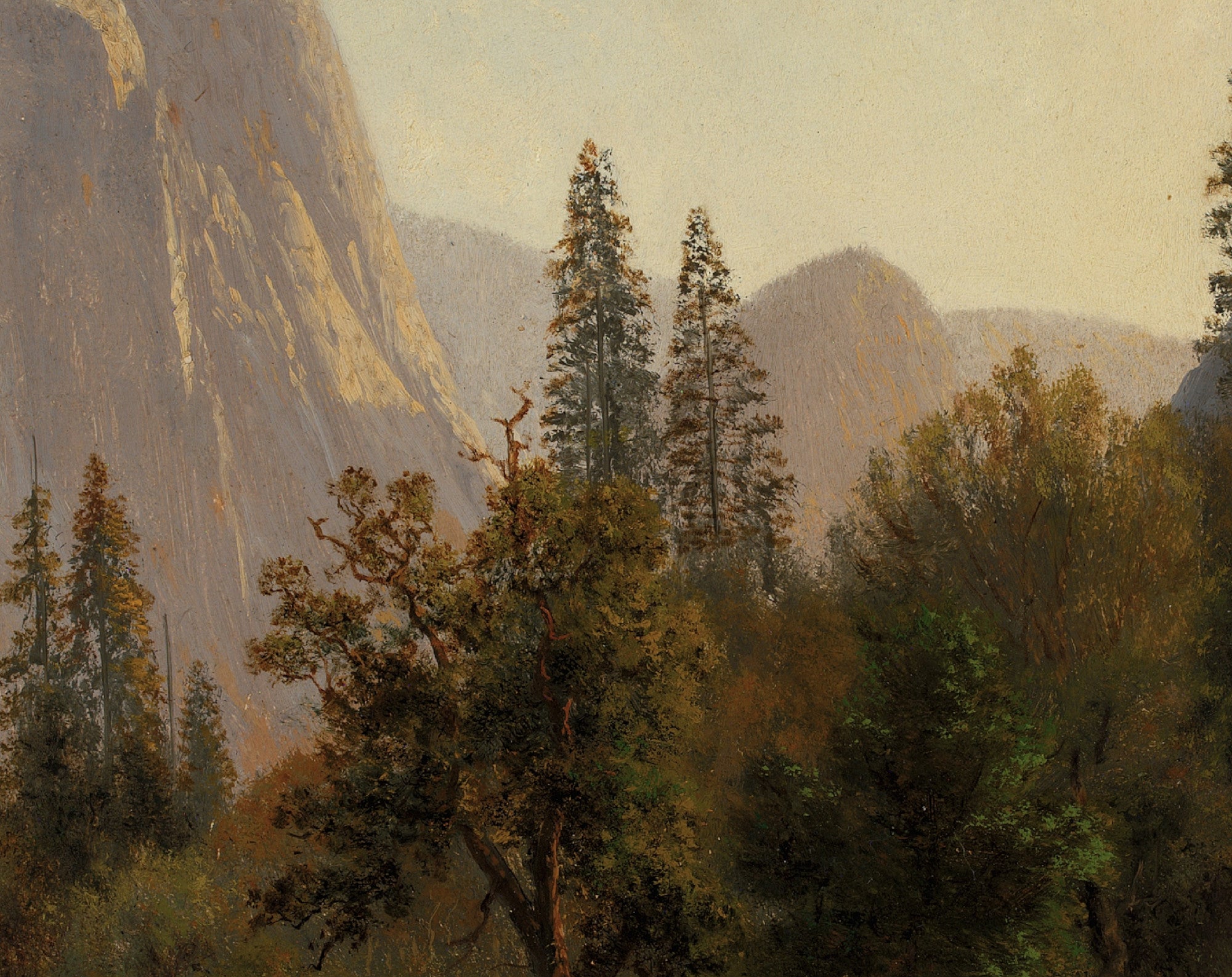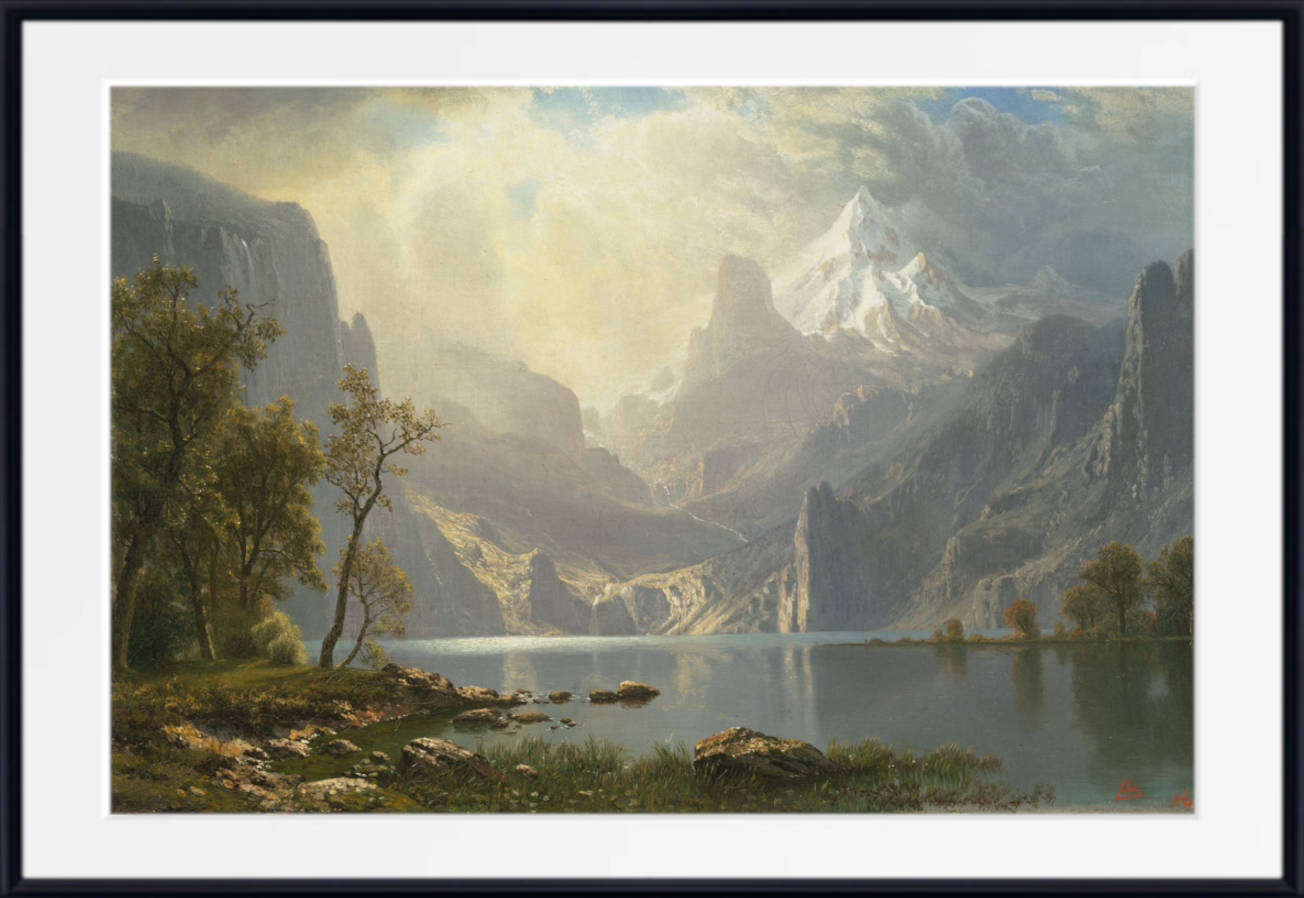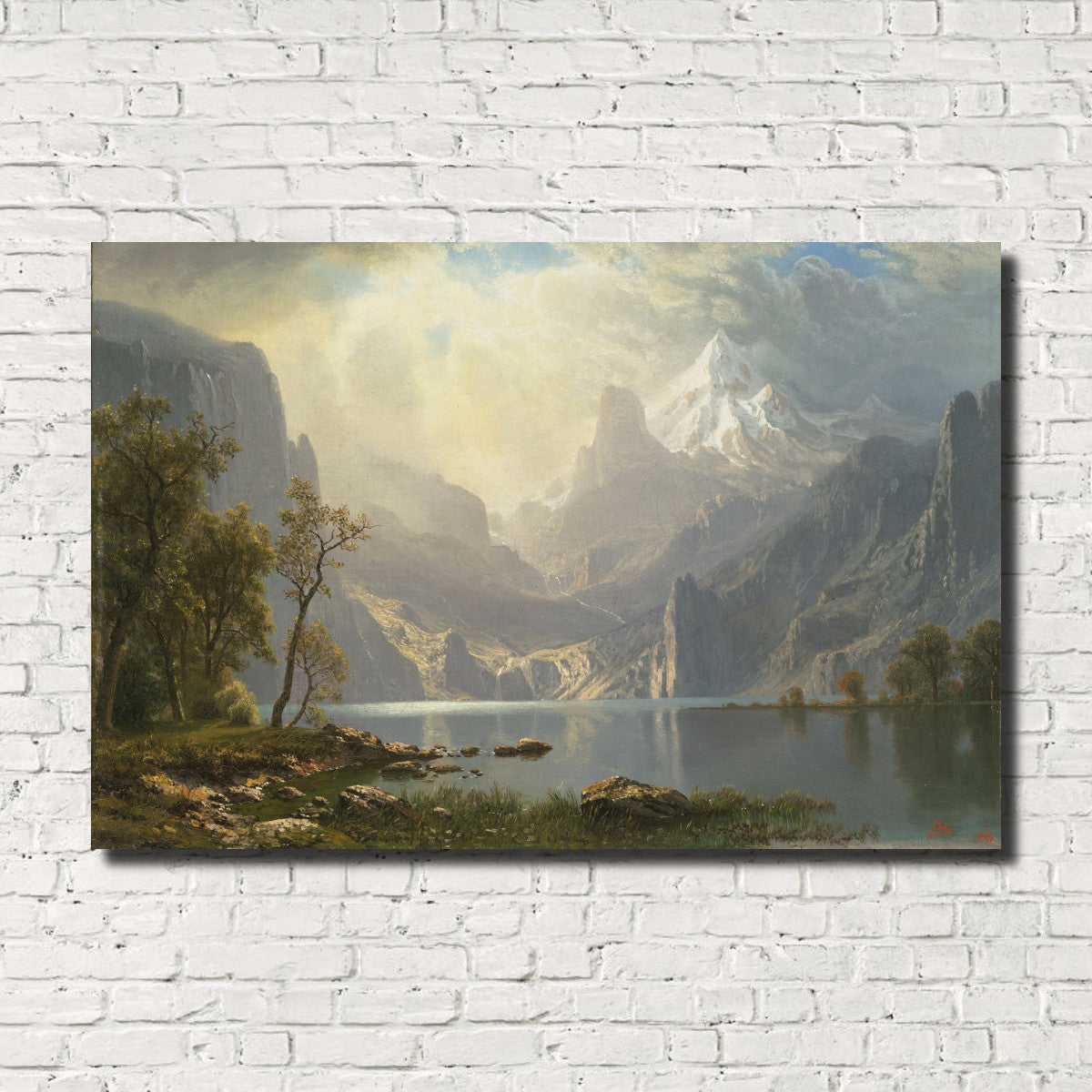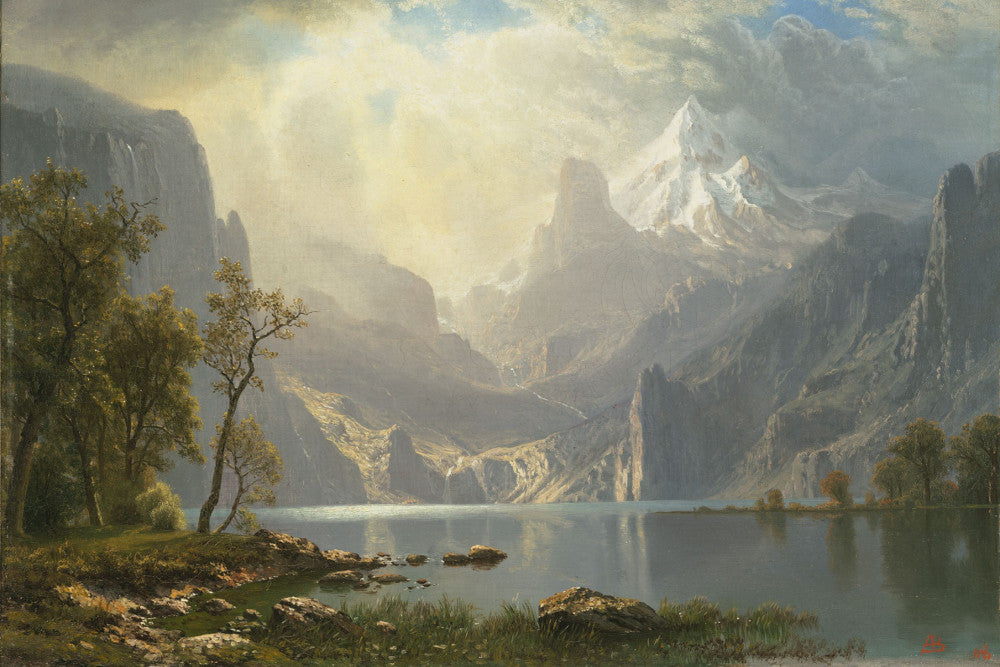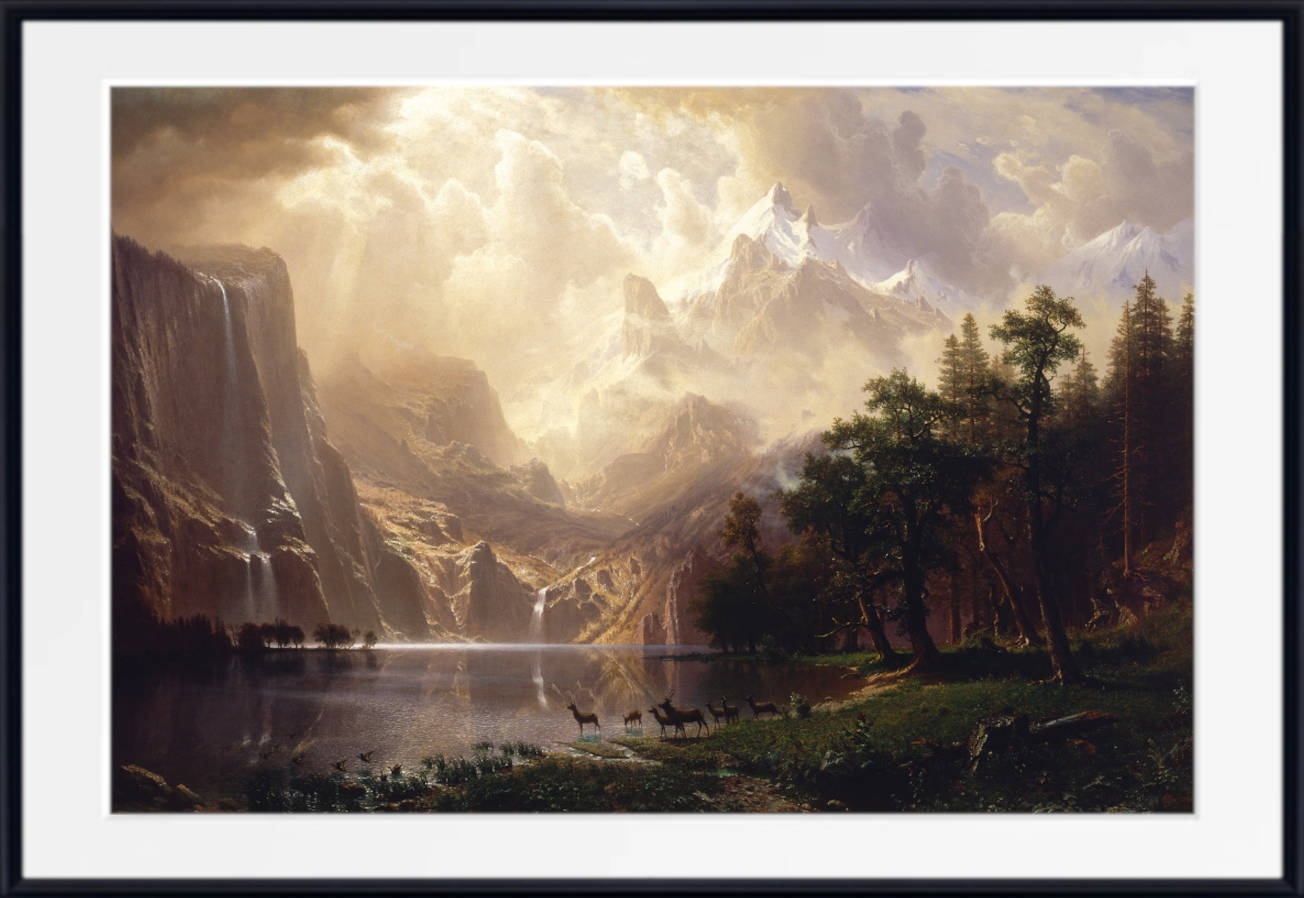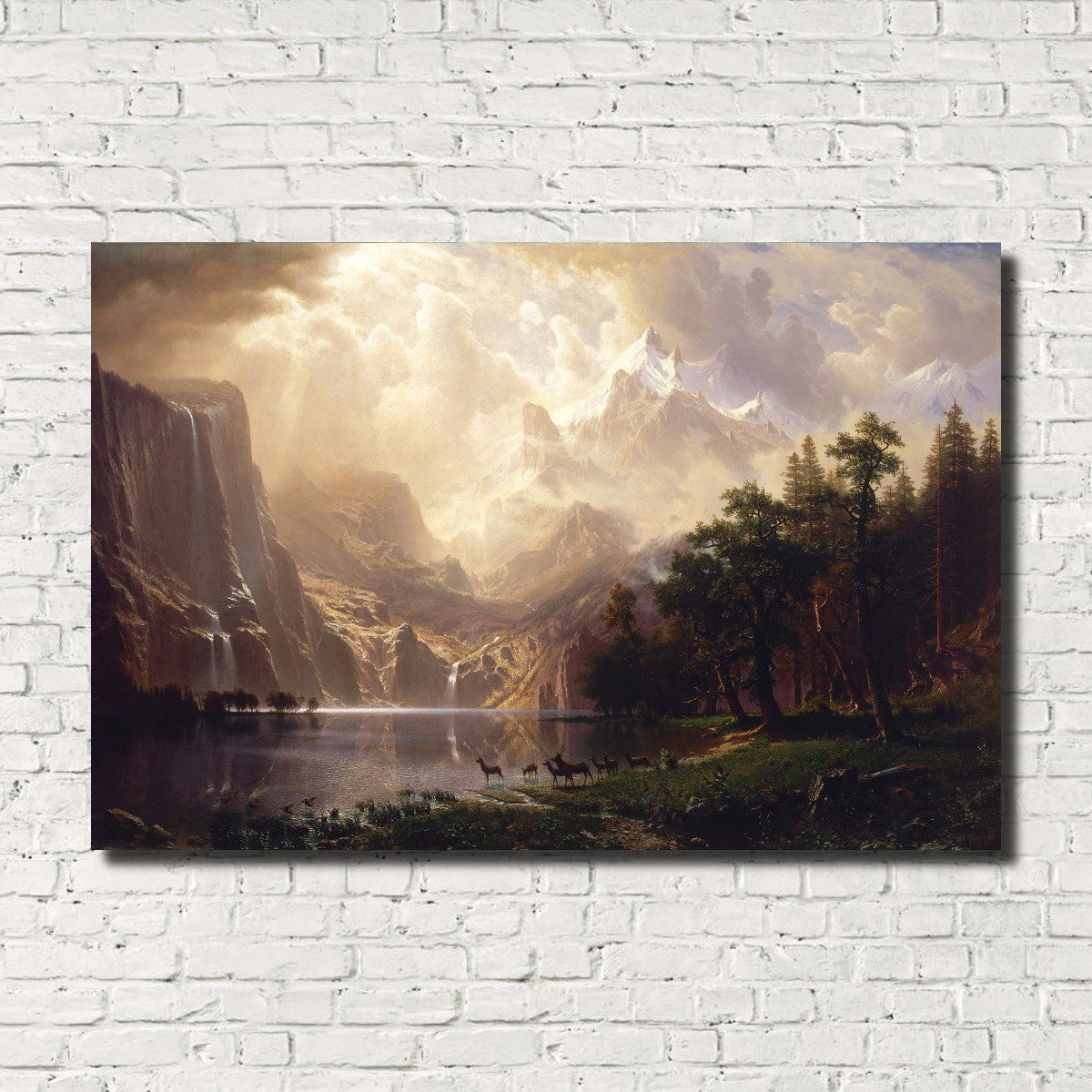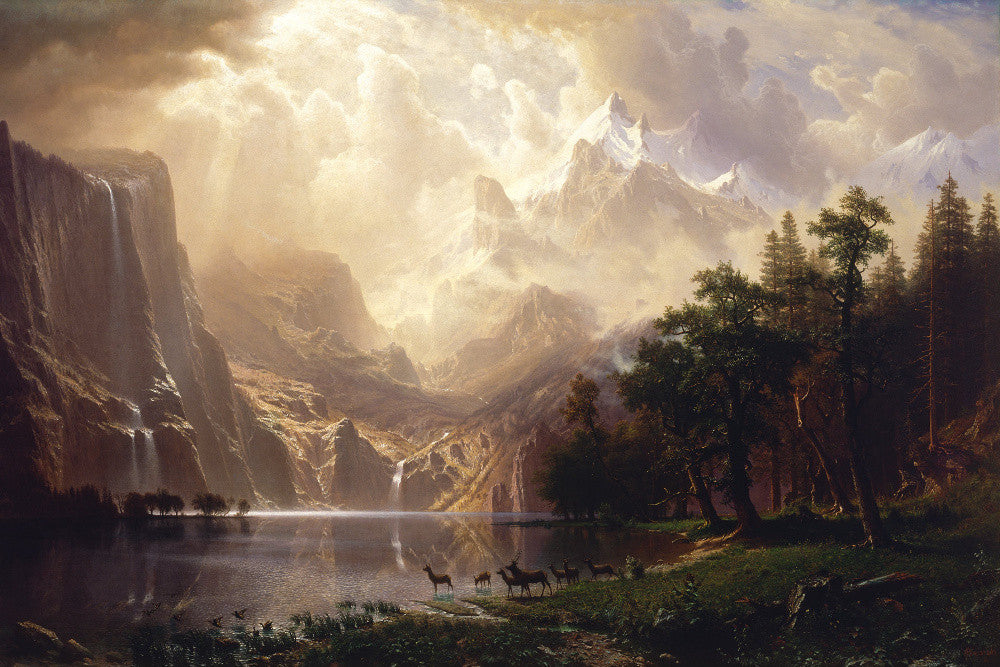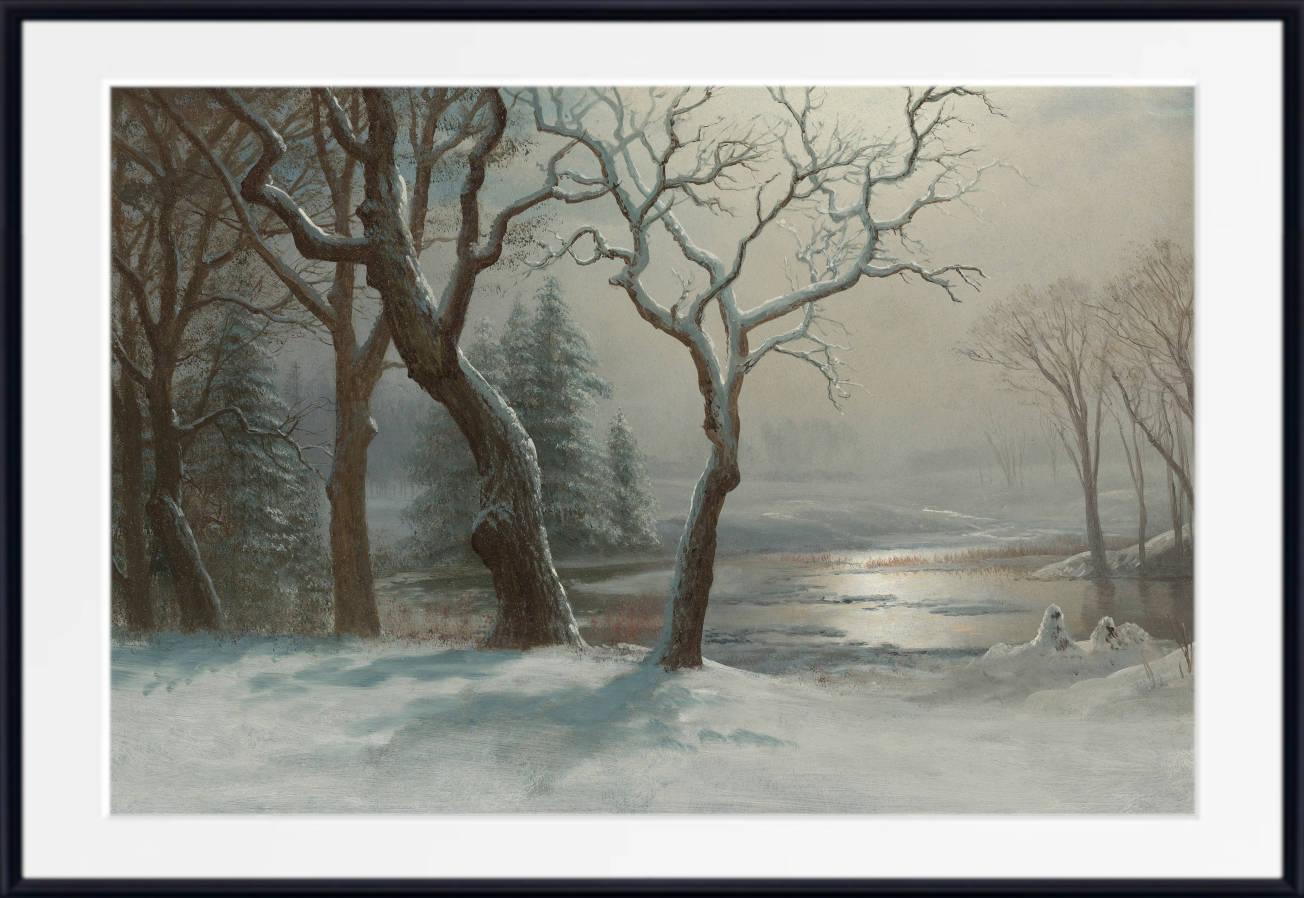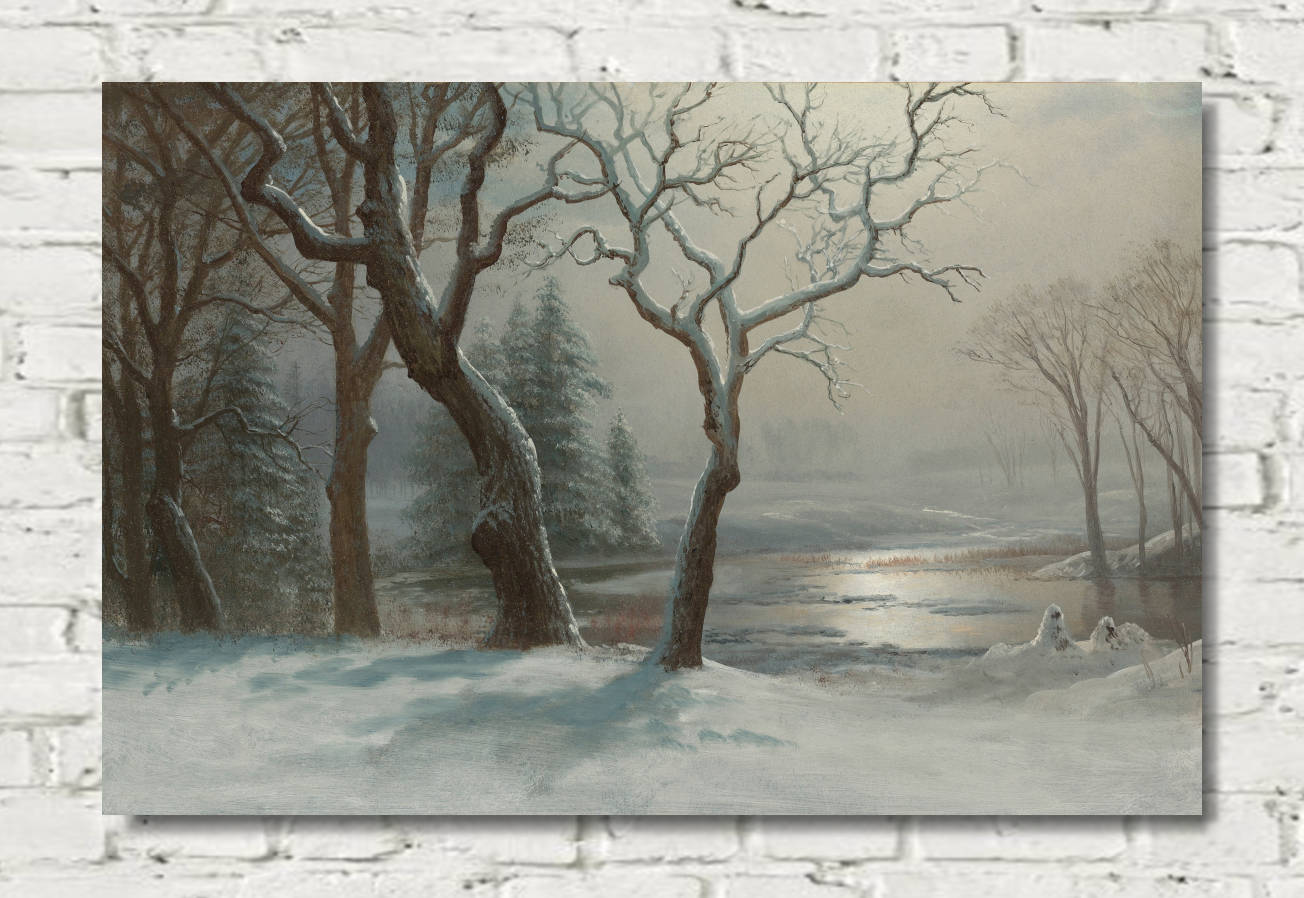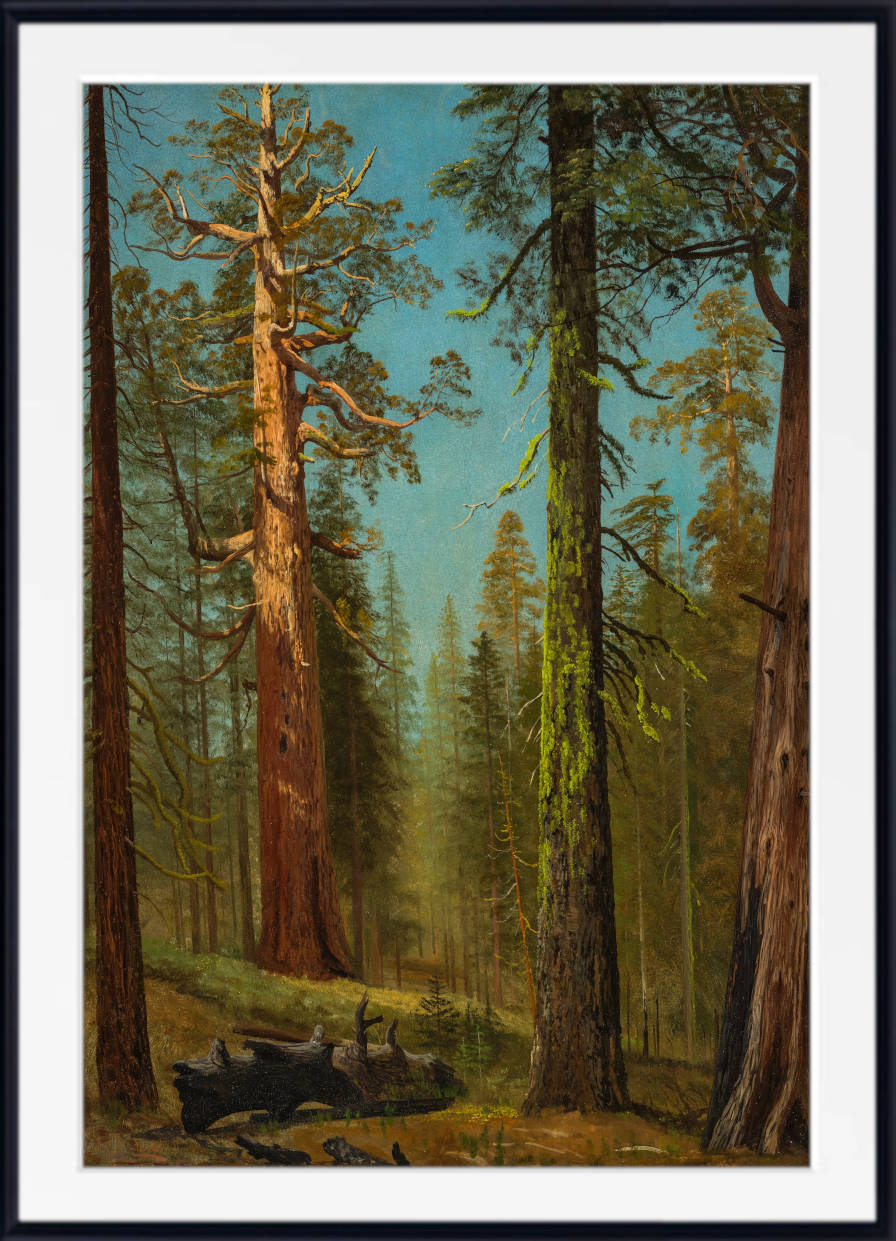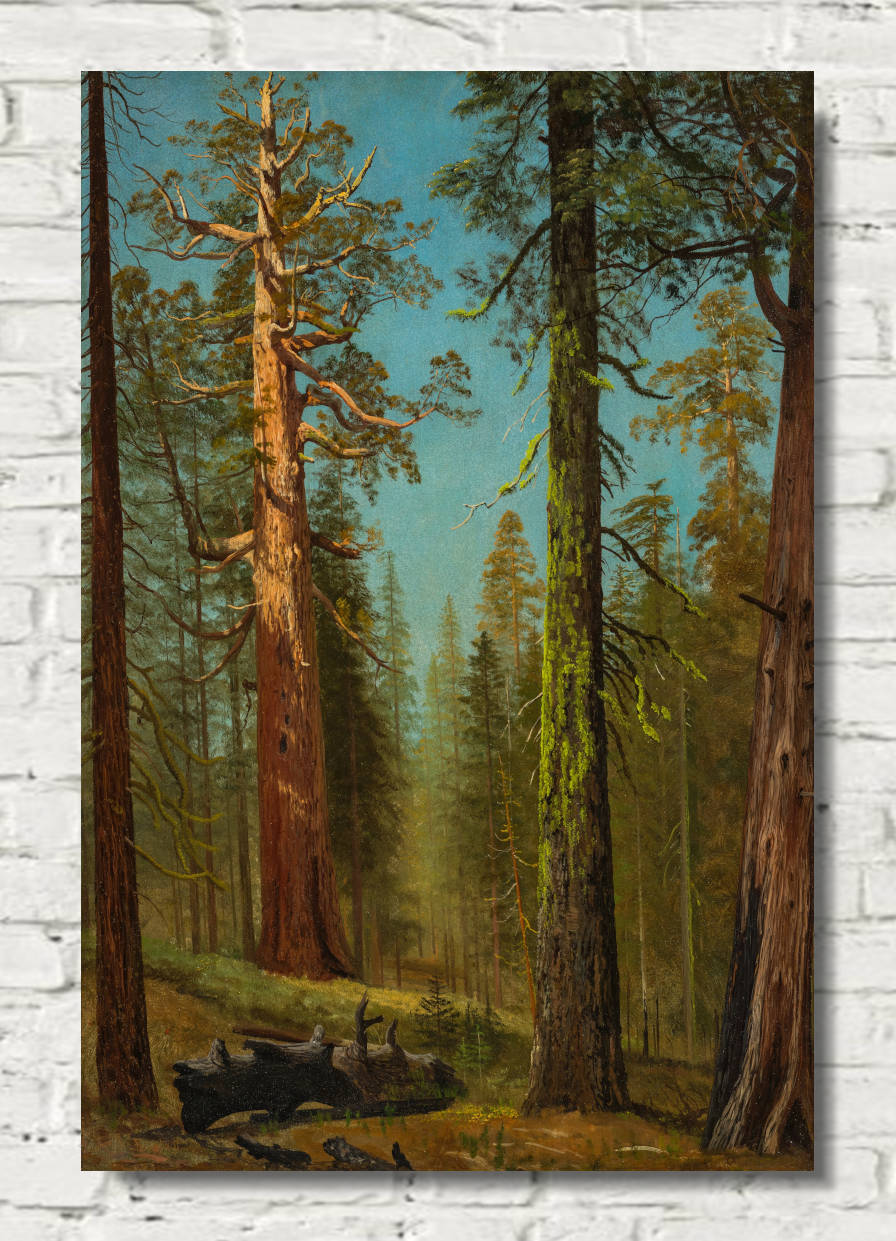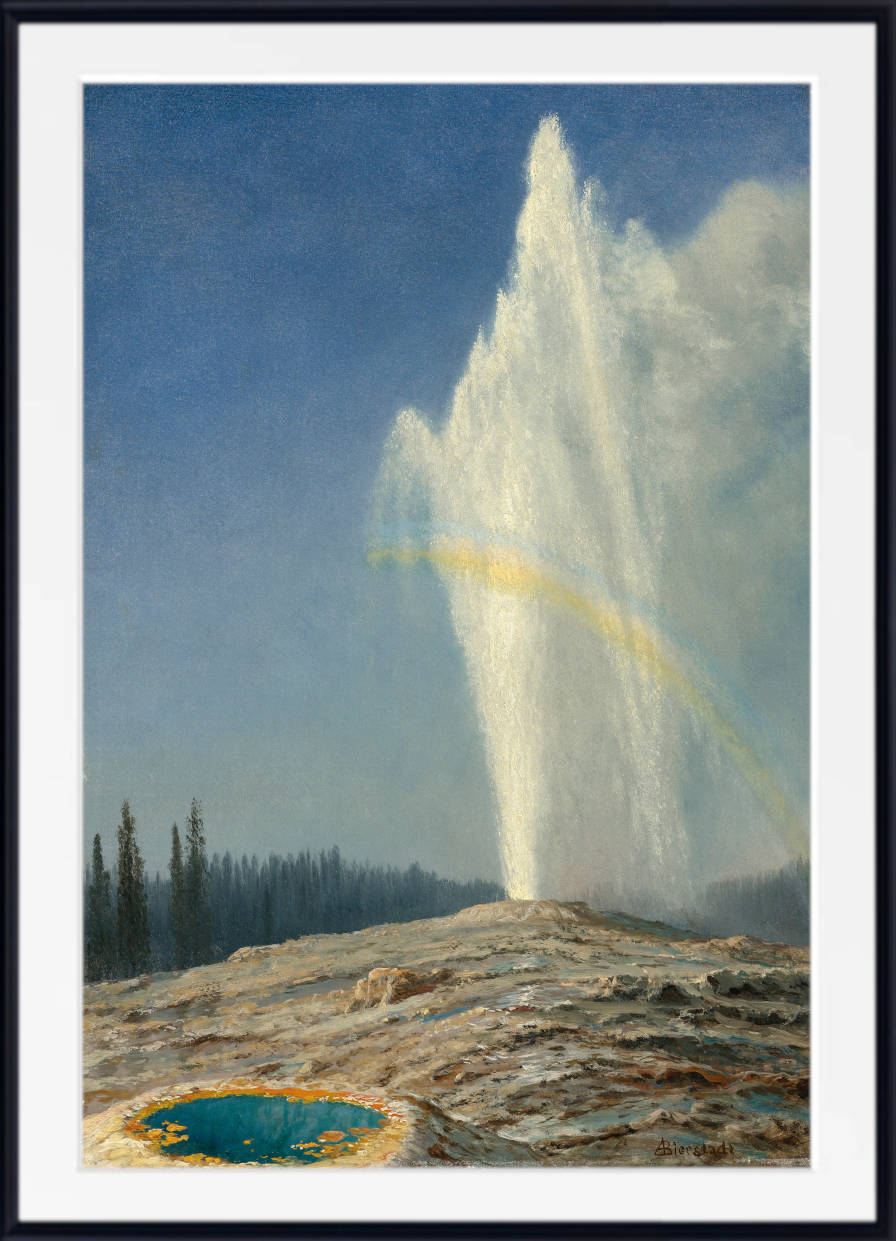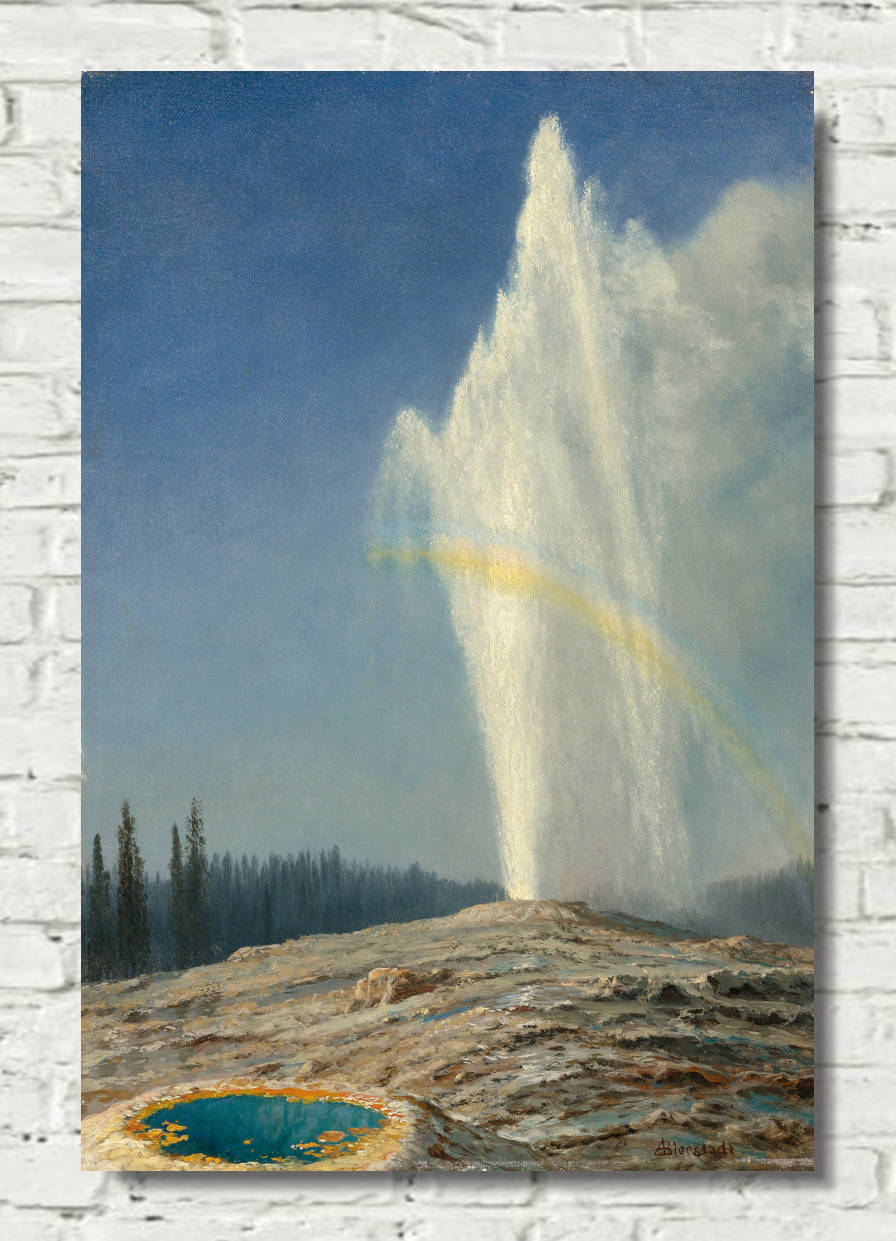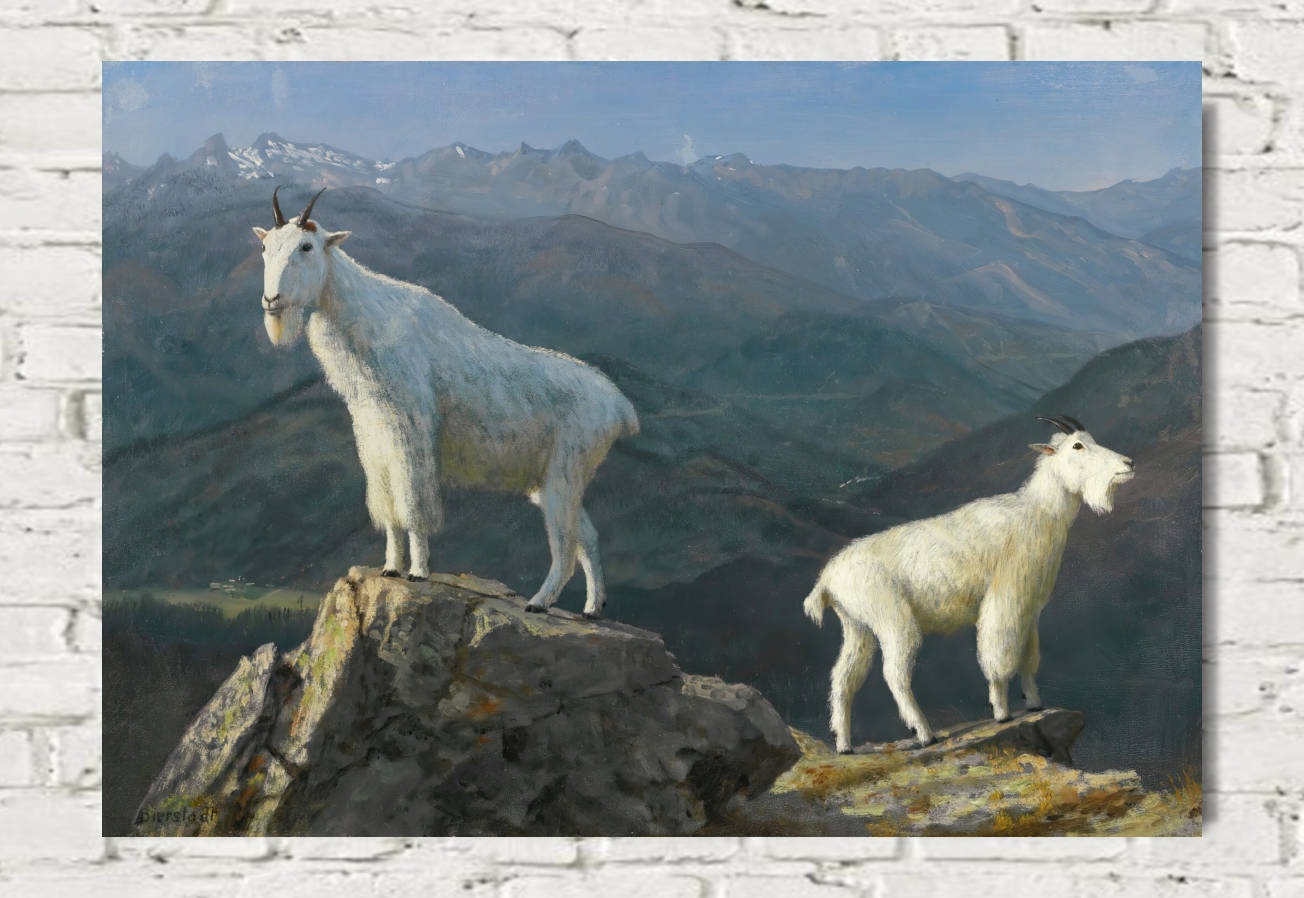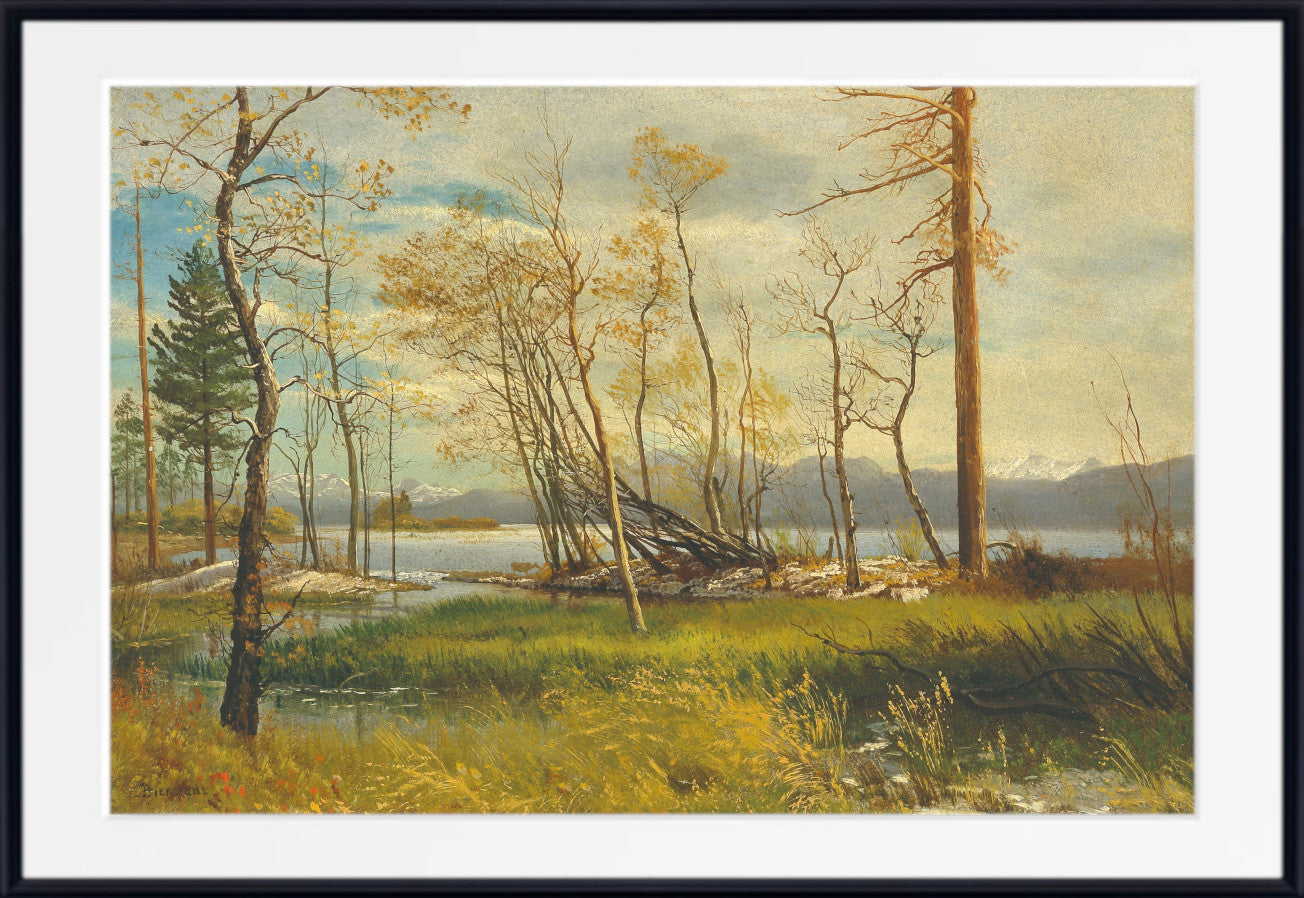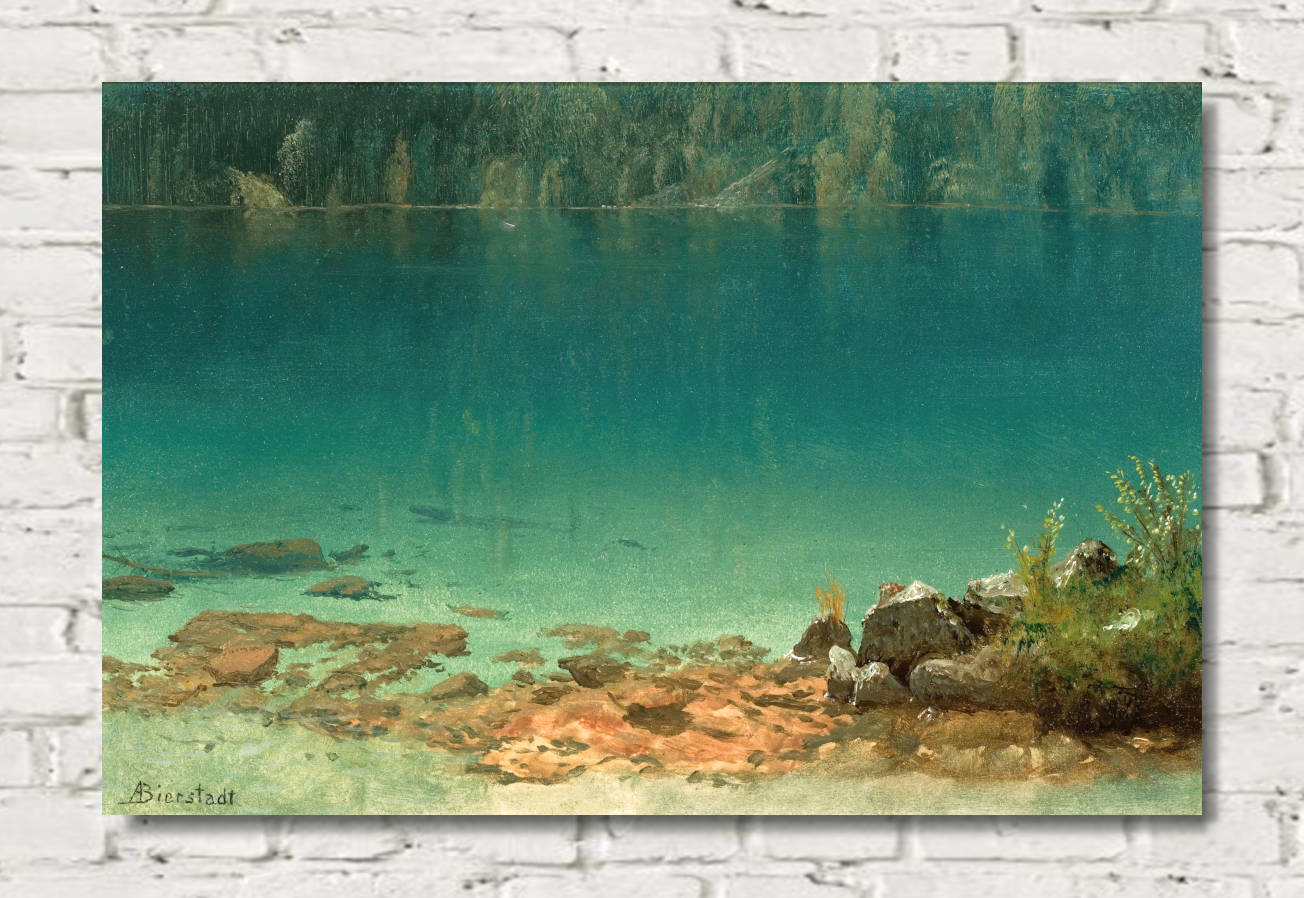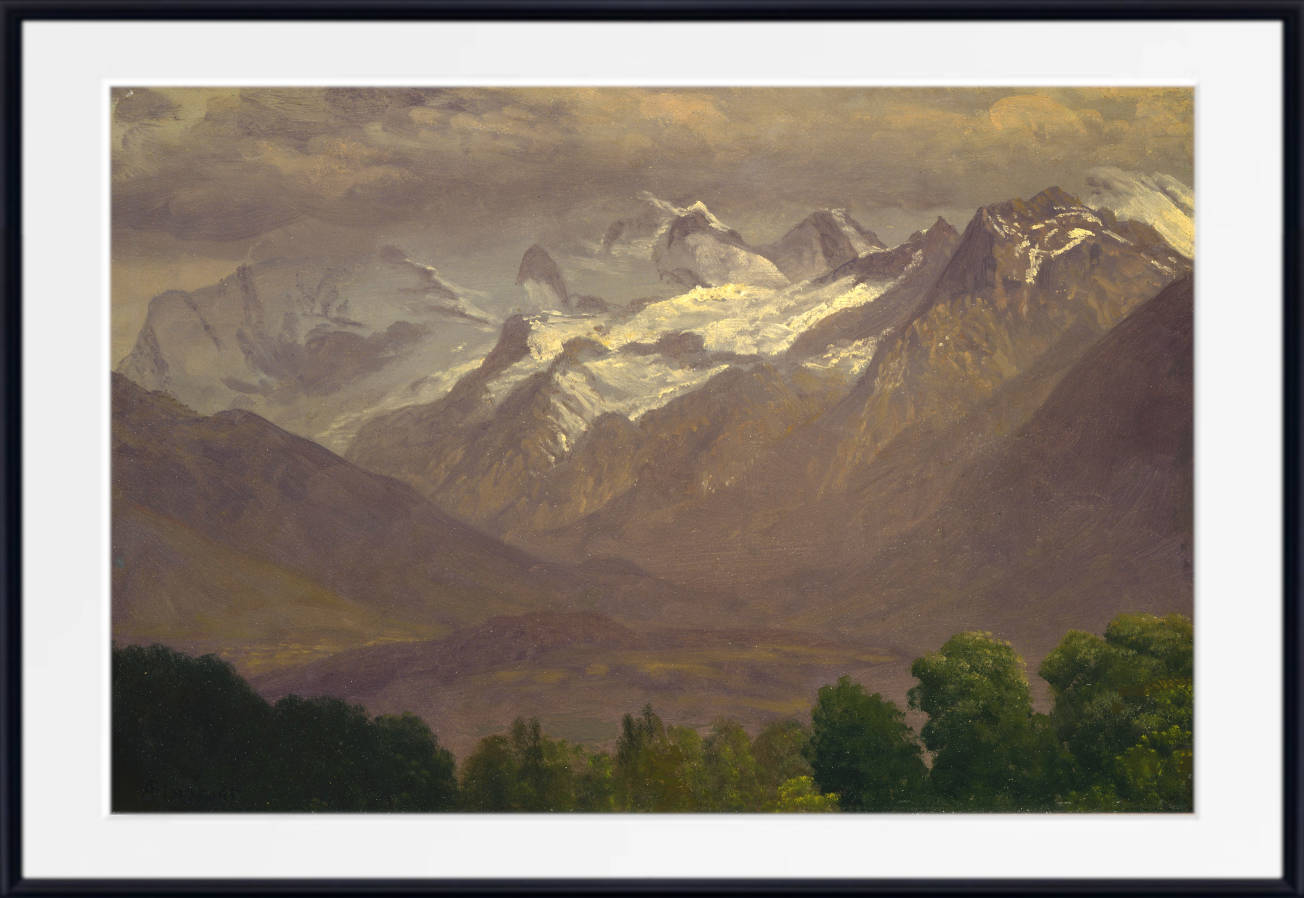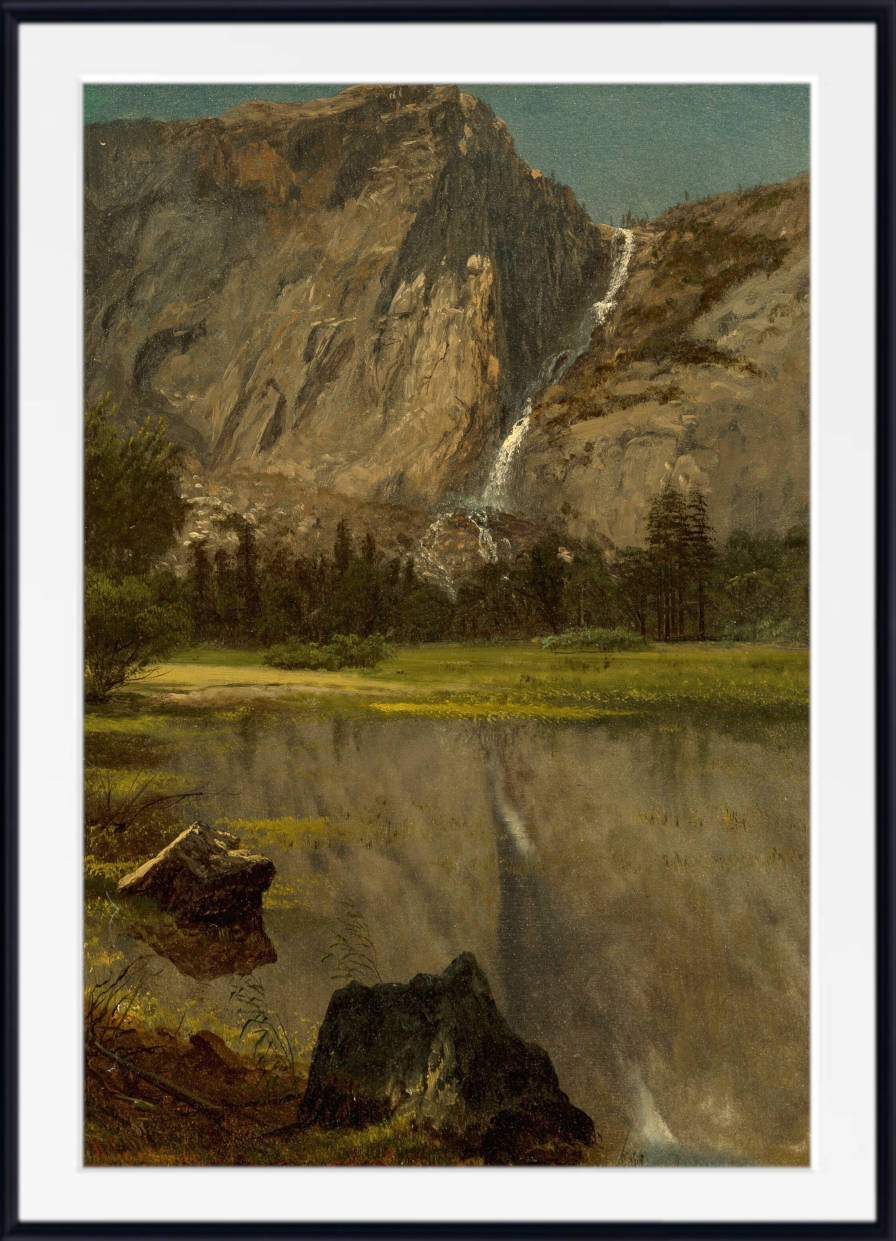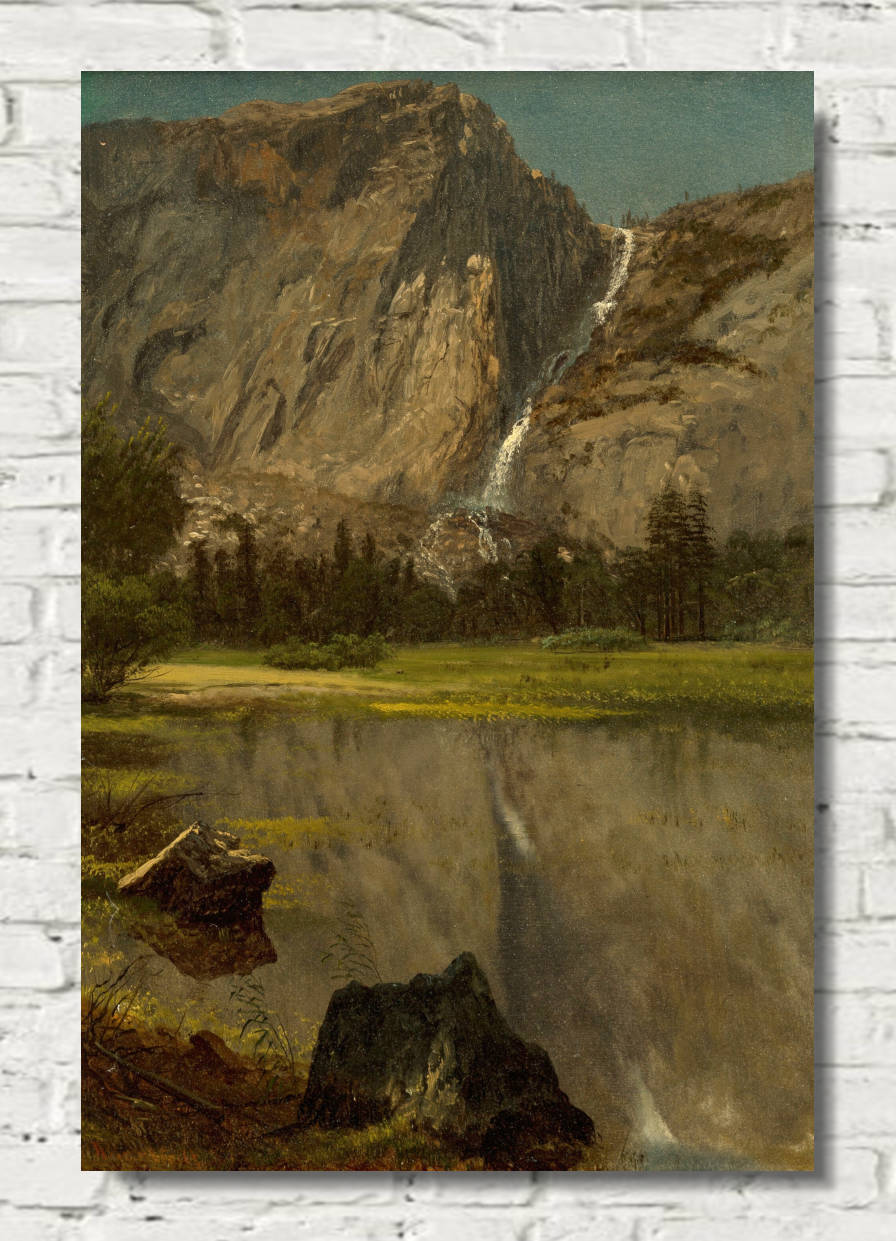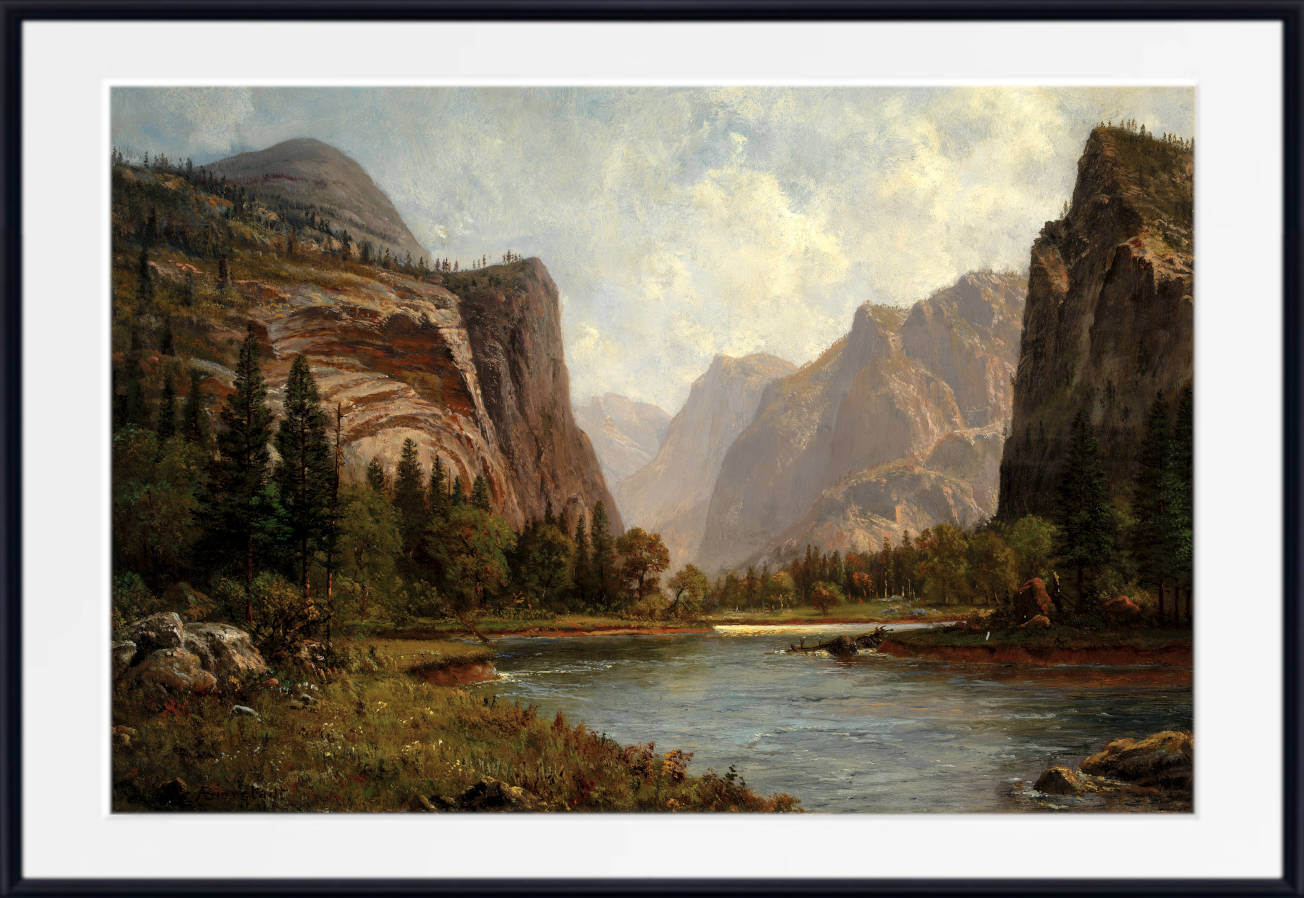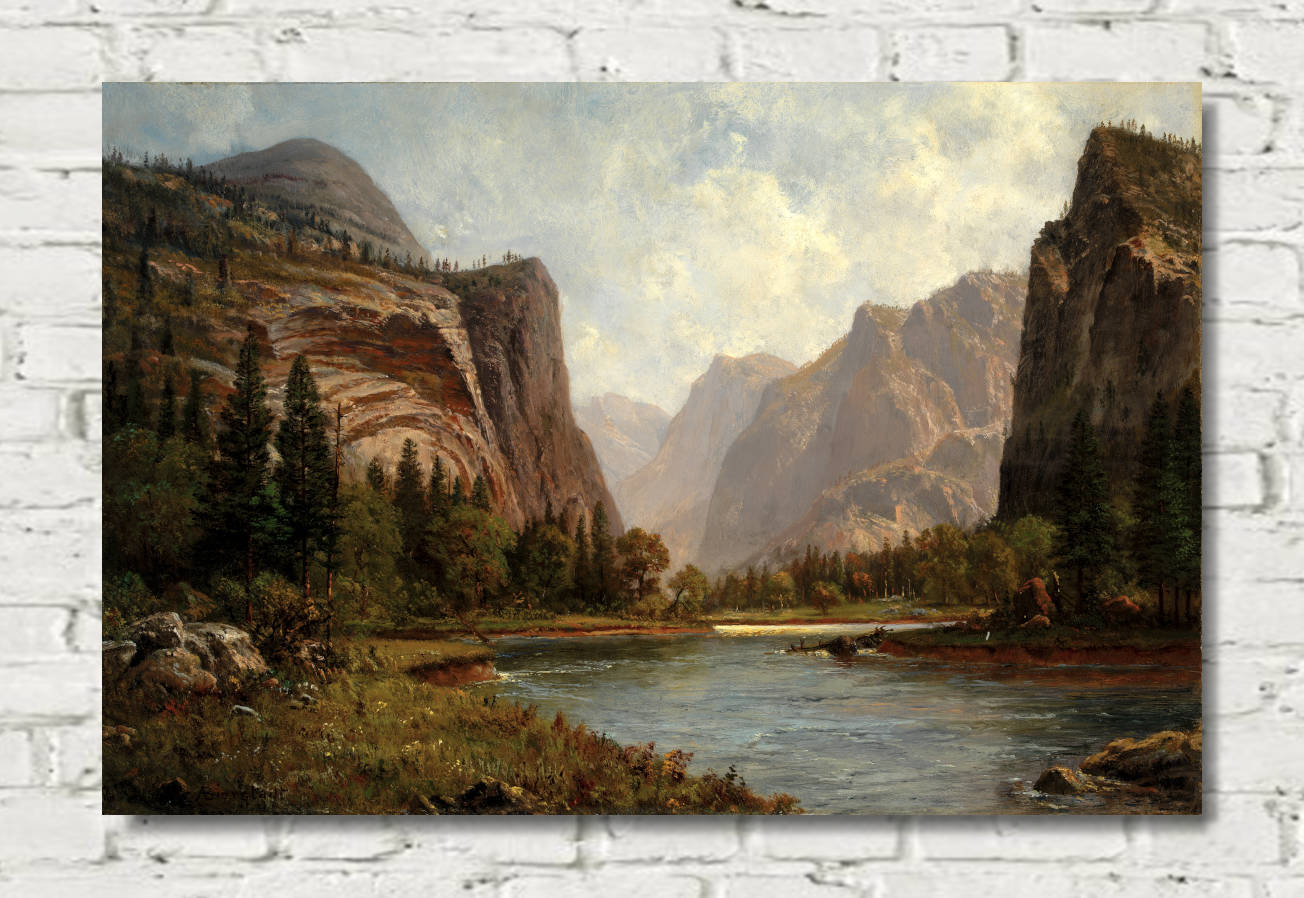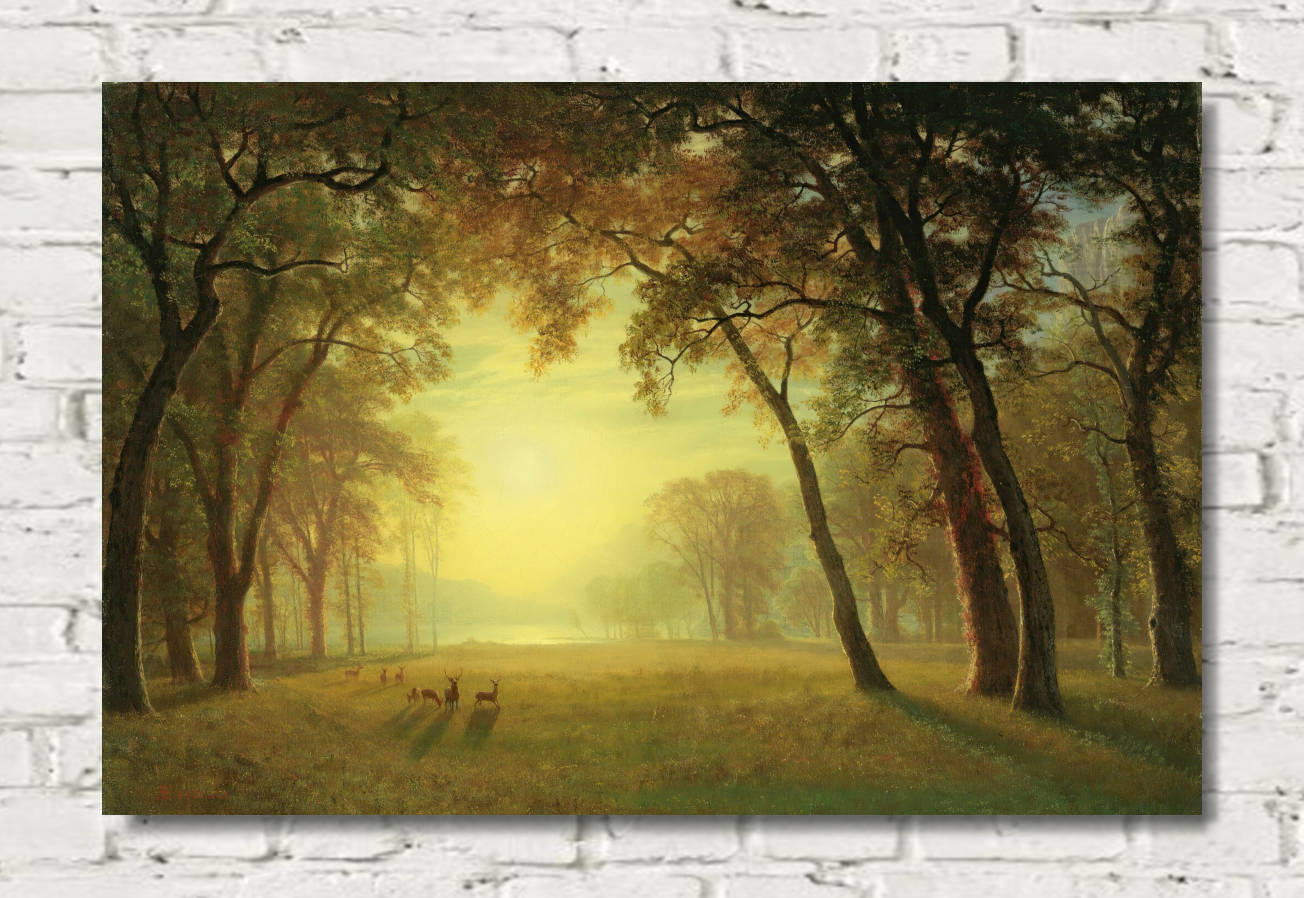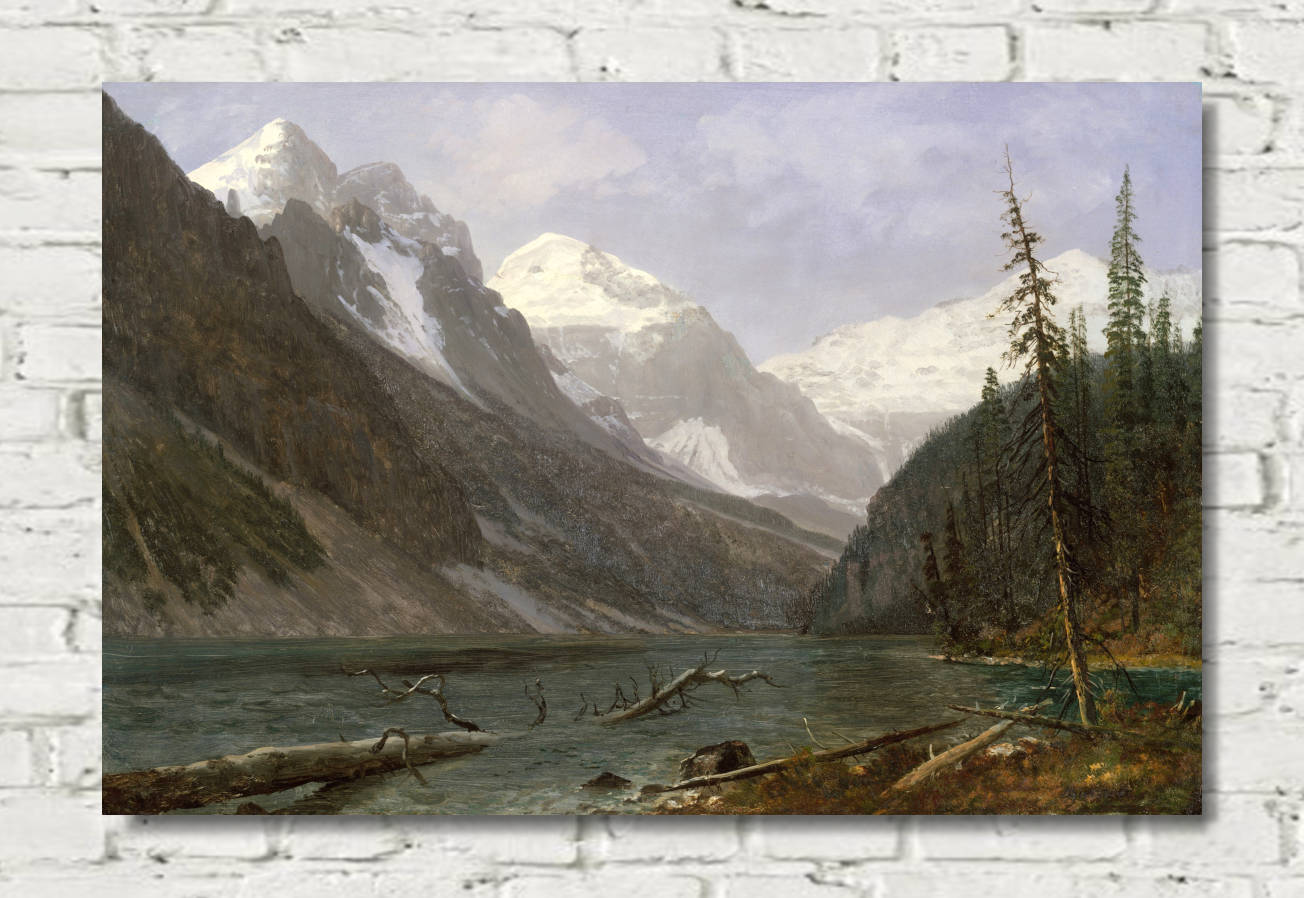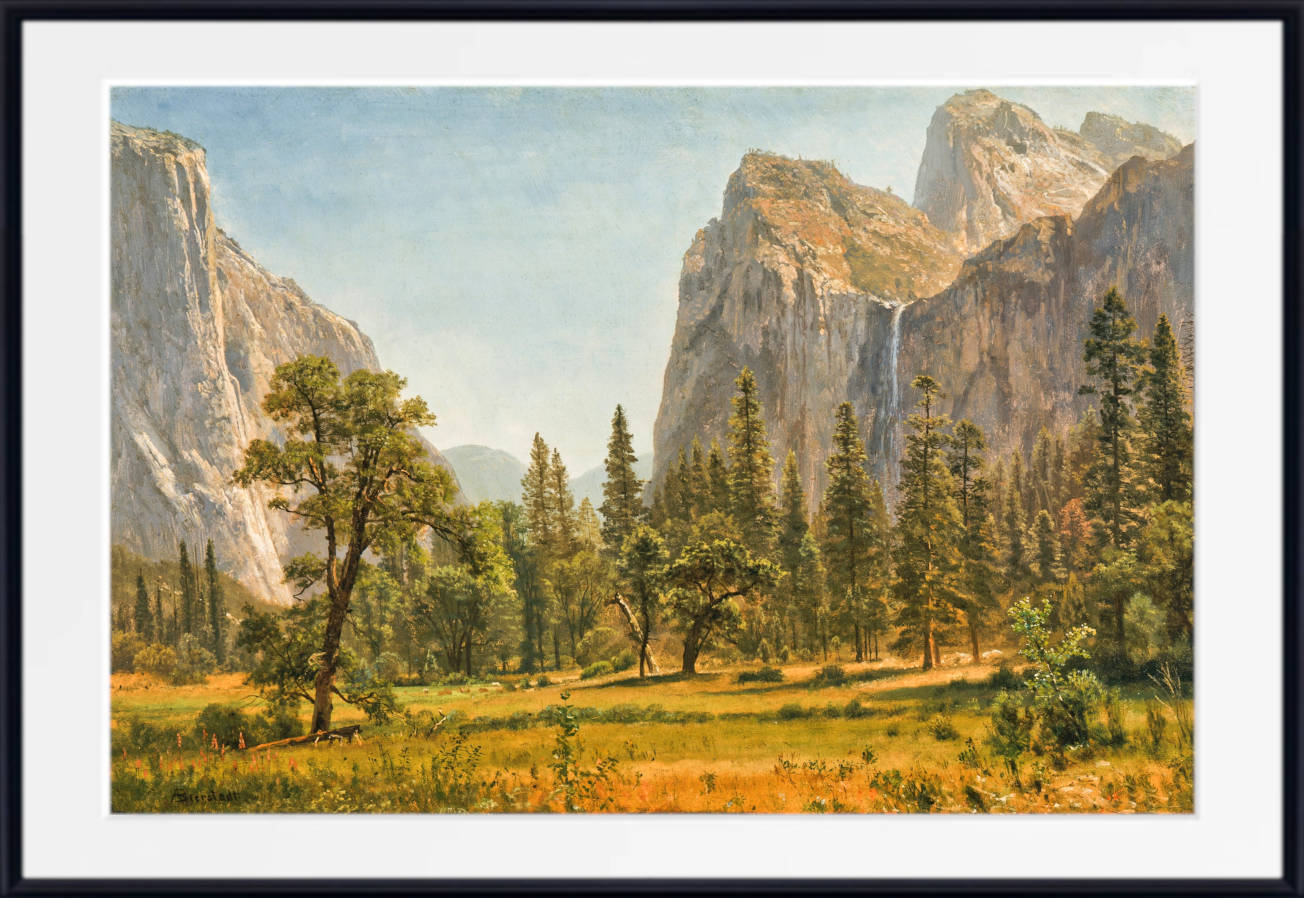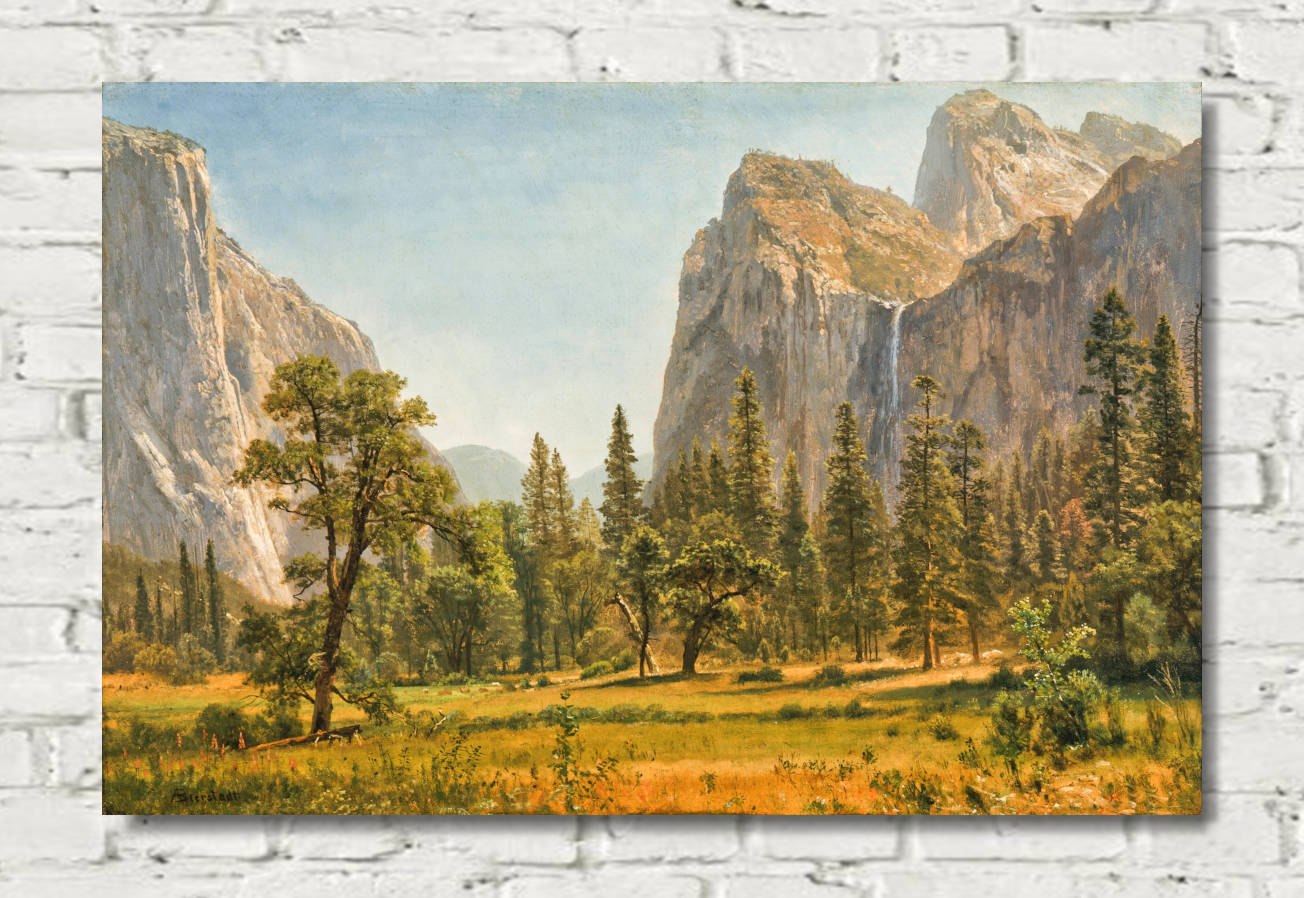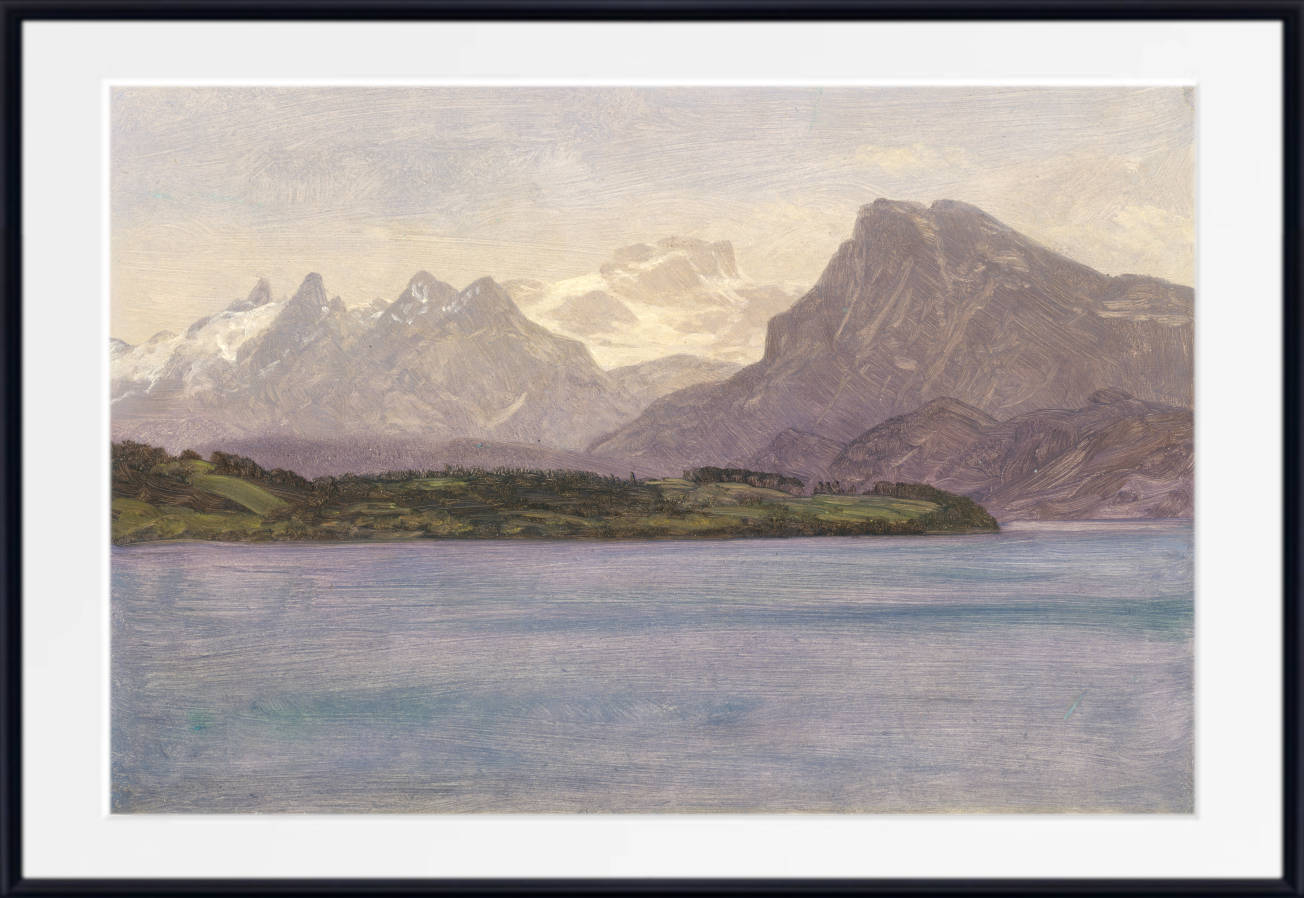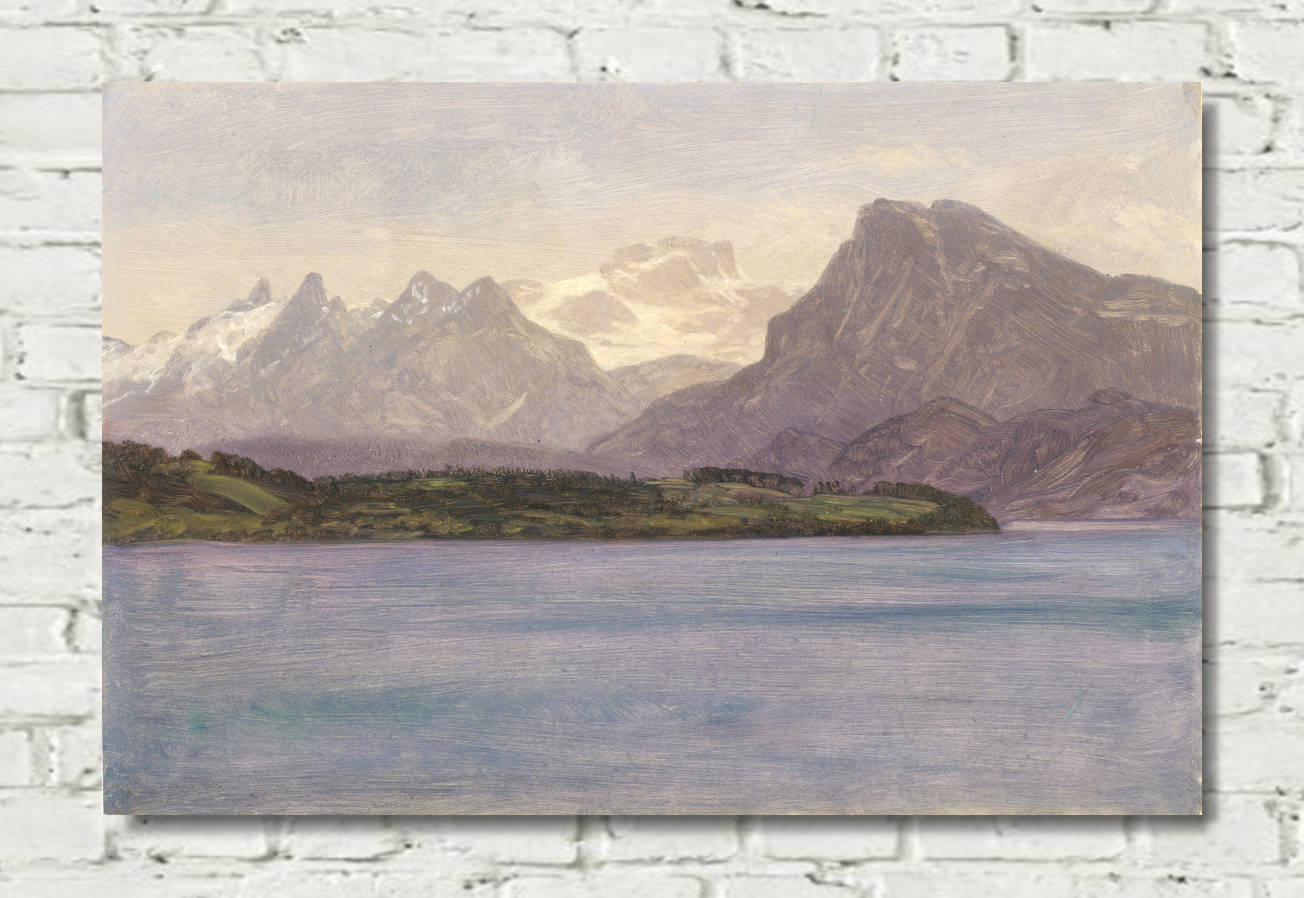The Domes of the Yosemite, Albert Bierstadt
Bierstadt is today widely regarded as one of the greatest landscape artists in the United States, despite being criticized by critics in his later years for being excessive and unrefined; a man whose unique paintings depict the natural history of the United States in the second half of the nineteenth century. He created epic panoramas of the wild American West from photographs and sketches, which proved to be extremely popular with the general public in the United States. He used color for a romantic rather than naturalistic effect because they were enormous and had such a powerful emotional effect. His paintings, strongly influenced by his trips to Europe, highlighted the plight of Native Americans and the buffalo's imminent extinction, as well as the concept of conservation, which led to the creation of new National Parks.
Bierstadt is associated with the Hudson River School painters of the second generation. Bierstadt, like his contemporaries Frederic Church and Thomas Moran, became well-known for his willingness to travel great distances in search of the most breathtaking scenery, frequently traversing treacherous terrain. He produced a romanticized and finely detailed version of the American West that he composed from a selection of his own sketches and photographs. He took his stylistic lead from the landscapists of the Düsseldorf School and was inspired thematically by his own tour of the Alpine regions of Switzerland and Italy. Despite the fact that Bierstadt is primarily associated with paintings that are somewhat less grandiose in scale, he was nonetheless regarded as a pioneer of the style that would later be known as Luminism. It was a term that was used to describe landscapes that had bright lighting effects that made the viewer feel calm and contemplative. In point of fact, Luminism held the view that one could only have a transcendental experience by immersing oneself in the wonders of nature. Ostensibly Bierstadt's most well known painting, Domes of Yosemite (1867), elevated what was to turn out to be maybe America's most treasured regular marvel: the Yosemite Valley's mountain peaks. According to the Art Institute of Chicago, Bierstadt's work "enhanced the natural scene by narrowing the valley and dramatically accentuating the heights of the mountains" in a manner that evoked "gothic architecture and the soaring heights of a medieval cathedral's central nave." A viewing platform was built in 1882 at the same vantage point from which Bierstadt initially composed his scene due to the painting's success. A collection of "tropical" landscapes that Bierstadt created while residing in the Bahamas served as a complement to his American and European works toward the end of his career. His Bahamian works showed the artist in a more expressive state of mind, departing from his Luminist technique. These seascapes and landscapes used brighter, bolder colors and focused less on the magnificent presence of nature and more on the lives and activities of the locals.
Albert Bierstadt - Early Career
Bierstadt learned most of his skills on his own, and when he was twenty, he started working as a drawing teacher in New Bedford. He began experimenting with oil paints a year later. Additionally, for the first time, he presented thirteen of his works in Boston at the New England Art Union. After exhibiting at the Massachusetts Academy of Fine Arts and visiting the White Mountains in New Hampshire in 1853, he went to northern Europe to study at the Düsseldorf School. The Düsseldorf School was led by painters from the German Romanticism movement like Andreas Achenbach, Karl Friedrich Lessing, Johann Wilhelm Schirmer, and Hans Fredrik Gude. These artists were proponents of the en plein air (painting outdoors) method, and their works frequently contained religious overtures. Bierstadt had hoped to get in touch with Johann Peter Hasenclever, a prominent Düsseldorf school member and distant relative, but Hasenclever tragically passed away shortly before Bierstadt arrived.) While in Düsseldorf, Bierstadt sought out Emanuel Gottlieb Leutze, a German-American history painter, and Worthington Whittredge, an American landscape painter, in the hopes that they could persuade Achenbach to accept him as a student. They, on the other hand, thought Bierstadt's work was overtly decorative, and they convinced him of the liar that Achenbach did not accept new students. However, "theatrical compositions, hard-edged Neoclassical drawing techniques, careful attention to detail, and romanticized landscapes [which were] sentimental, fanciful, and allegorical in content [and] painstakingly executed in a highly finished style]" were encouraged by Leutze and Whittredge, according to arts writer Charles McQuillen. For four years, Bierstadt devoted himself to his art while living in Europe. He traveled with Whittredge through Germany, Switzerland, and Italy in his final year in Europe. During the winter, he visited Rome, Naples, and Capri. He returned to New Bedford as a mature artist in 1857. After a brief period of teaching drawing and painting, he devoted his entire time to his own work. Remove Ads In the beginning, Bierstadt created works that were based on fictitious European scenes. After that, toward the end of 1857, he joined Frederick W. Lander's overland survey and traveled to the Rocky Mountains and the western part of the United States. The government had hired Lander to survey, engineer, and eventually construct the route that would become known as the "Lander Trail" between Idaho and Wyoming. Along the way, Bierstadt began to experiment with the brand-new medium of photography and sketched numerous times. The vast vistas that he would later paint in his studio were based on his sketches and photographs. This time around, Bierstadt went to the Platte River and the Wind River Mountains in 1859. While there, he sketched scenes of native life and took in the stunning scenery. He continued on to the Rocky Mountains, where the views occasionally rivaled those of the European Alps. "Our own country has the best material for the artist in the world," declared Bierstadt, who was overjoyed. Base of the Rocky Mountains, painted around 1860, was his first significant work from this period, but it is now lost.
Albert Bierstadt - Mature Period
At the National Academy of Design (NAD) annual exhibition in the spring of 1858, Bierstadt's large painting of Lake Lucerne in the Swiss Alps wowed critics in New York. He had such an impact that he was made an honorary member of the NAD a few weeks later. He set up shop in the Tenth Street Studio Building when he moved to New York. One of Bierstadt's most acclaimed works, The Rocky Mountains, Lander's Peak (1863), was one of his mountainous American West paintings, and he quickly established a strong reputation for them. He also started a successful photography business with his brothers Charles and Edward in New York City around this time, which lasted from 1860 to 1866. With author Fitz Hugh Ludlow, perhaps best known for his book The Hasheesh Eater, in which he described his drug-using experiences, Bierstadt set out again toward the west at the beginning of 1863. After traveling through San Francisco and Utah, the two men spent seven weeks in Yosemite Valley before returning via Oregon. Rosalie Ludlow was released to pursue Bierstadt after his divorce from Rosalie. Despite this, Ludlow and Bierstadt continued to be close friends, with Ludlow becoming one of the artist's most ardent supporters. In articles for The Atlantic Monthly and later in a book titled The Heart of the Continent (1870), he wrote about their expeditions. Additionally, Ludlow was an art critic for The New York Evening Post, where he praised Bierstadt's paintings.) Bierstadt was summoned to the military later in 1863, but he paid another man to serve in his place. His painting Rocky Mountains was on display at the New York Sanitary Fair the following year alongside the work of the well-known landscapist Frederic Edwin Church. James Jackson Jarves, an influential art critic, praised it for its "unsurpassed rendition of American light." With his fame growing, Bierstadt built "Malkasten," a house and studio north of New York City in Irvington with a view of the Hudson River, in 1865. Bierstadt traveled to New Hampshire and New England frequently with his brother Edward, a photographer, from this location. In point of fact, it was in New Hampshire that he completed Emerald Pool, which is widely regarded as one of his most accomplished works (1870).
The so-called second-generation Hudson River School came to include Bierstadt. Because they traveled to more distant domestic locations than the immediate Hudson Valley, the artists were regarded as "second." In point of fact, Bierstadt and Thomas Moran shifted their geographical focus and presented the Western landscape as the embodiment of the nation's untapped natural resource. In addition, whereas Thomas Cole, the founder of the Hudson's group, emphasized the production of sublime, allegorical images of nature, the second-generation artists shifted their focus and produced paintings that evoked a sense of contemplative serenity in the viewer. Remove Ads Bierstadt came to be associated with the idea of Manifest Destiny because he helped bring the great American West into the national consciousness. This was the conviction, broadly held in nineteenth century America, that the white pioneers of the West had acknowledged a Divine being given mission to vanquish their current circumstance as an approach to making a new "paradise on the planet" (specifically America). "Bierstadt painted the West as Americans hoped it would be," according to historian Anne F. Hyde, "which made his paintings vastly popular and reinforced the perception of the West as either Europe or sublime Eden."

Merced River, Yosemite Valley, Albert Bierstadt

Lake Lucerne, Albert Bierstadt

Surveyor’s Wagon in the Rockies, Albert Bierstadt
Albert Bierstadt - Later Years
After marrying in 1866, Bierstadt and Rosalie traveled throughout Europe for two years. They were given an audience with Queen Victoria while they were in London, who was known to be a fan of his work; Bierstadt was honored in Paris with the prestigious Legion of Honour medal; The couple also had dinner with the well-known composer Franz Liszt in Rome. Bierstadt rented studios and continued to paint while on these trips. He returned to the United States and traveled further West, this time to Yosemite and the Sierra Nevada. Bierstadt stayed for two years, painting, sketching, and selling his work to local collectors. The Bierstadts took the newly constructed transcontinental railroad to San Francisco in July 1871. In California, they remained until October 1873. The Discovery of the Hudson (1874), a painting by Bierstadt, was installed in the United States Capitol Building in 1875. The following year, President Rutherford B. Hayes invited him to the White House. However, Bierstadt's work for the Philadelphia Centennial in 1876 was not well received, indicating the beginning of his artistic decline. Rosalie received a tuberculosis diagnosis in the fall of 1876, and her doctor advised her to seek treatment in warmer locales. The Bierstadts moved to the Bahamas during the colder months on the advice of her doctor. There, Bierstadt sketched and painted the local tropical landscapes and seascapes with renewed enthusiasm. Indeed, when it was shown at the National Academy of Design in 1880, his painting The Shore of the Turquoise Sea (1878) may have been his last critical success. In 1882, Bierstadt's "Malkasten" studio burned down, resulting in the loss of numerous works. The art market was in decline at the same time as this severe setback. However, the American selection committee's rejection of his entry for the 1889 Exposition Universelle in Paris, The Last of the Buffalo (1888), dealt him the greatest blow to his morale. In the same year, Bierstadt made his final excursion west, traveling all the way to Alaska from the north. Sadly, however, he was being overshadowed by the rise of the North American landscapist George Inness. Inness was an artist who was heavily influenced by the French Barbizon School. He was exploring Tonalism, which was a more restrained style that favored a limited range of middle value colors, and his style was winning over critics and fellow artists. Inness was an artist who was exploring the natural world. Rosalie passed away in 1893. He got married again the following year to a wealthy widow, but because of his extravagant lifestyle, he declared bankruptcy. To pay off his creditors, he had to sell everything he owned, including 150 paintings. In his final years, Bierstadt was largely forgotten; His works were deemed exaggerated and out of date. On February 18, 1902, he passed away suddenly. He was buried at the Rural Cemetery in New Bedford, Massachusetts, and Mount Bierstadt in Colorado was named in his honor after him.
Albert Bierstadt - The Legacy
Along with other second-generation Hudson River school members like Asher B. Durand, John Frederick Kensett, Sanford Robinson Gifford, Thomas Moran, and Frederic Edwin Church, Bierstadt became famous for painting expansive views of the American landscape in the nineteenth century. But Bierstadt's focus on the unexplored American West set him and Moran apart from other Hudson School associates. In this way, he contributed to introducing the general public to the unclaimed frontiers and wild wilderness of the United States. Indeed, his depictions of an American "Promised Land" became widely known and encouraged subsequent generations of settlers and explorers to move westward. Artists of the American Regionalism movement of the 1930s, including Thomas Hart Benton, Grant Wood, and John Steuart Curry, demonstrated their debt to the Hudson River School by focusing on detailed, realistic, and often idealized images of rural America at a time when a large portion of the population had grown disillusioned with urban life and modern industry as a result of the Great Depression. This was despite the fact that the style of Bierstadt and the Hudson River School artists fell out of favor at the end of In addition, Bierstadt's approach and that of other Hudson River School artists were passed down to landscape photographers of the 20th century like Ansel Adams, whose breathtaking photographs captured the grandeur of the American landscape while also supporting conservation efforts by establishing National Parks.
Albert Bierstadt Famous Quotes
- Truly all is remarkable and a wellspring of amazemnet and wonder. Man is so fortunate to dwell in this American Garden of Eden
- Chris is one with his creaturesand so man must treat his fellow creatures as Christ would. The contunual slaughter of native species must be halted before all is lost.
- The magnificent beauty of the natural world is a manifestation of the mysteriuos natural laws that will be forever obscured from us.
- The colour of the mountains and of the plains and, indeed, that of the entire country reminds one of the colour of Italy; in fact, we have here the Italy of America in a primitive condition
- We have a great many Indian subjects. We were quite fortunate in getting them, the natives not being very willing to have the brass tube of the camera pointed at them.












